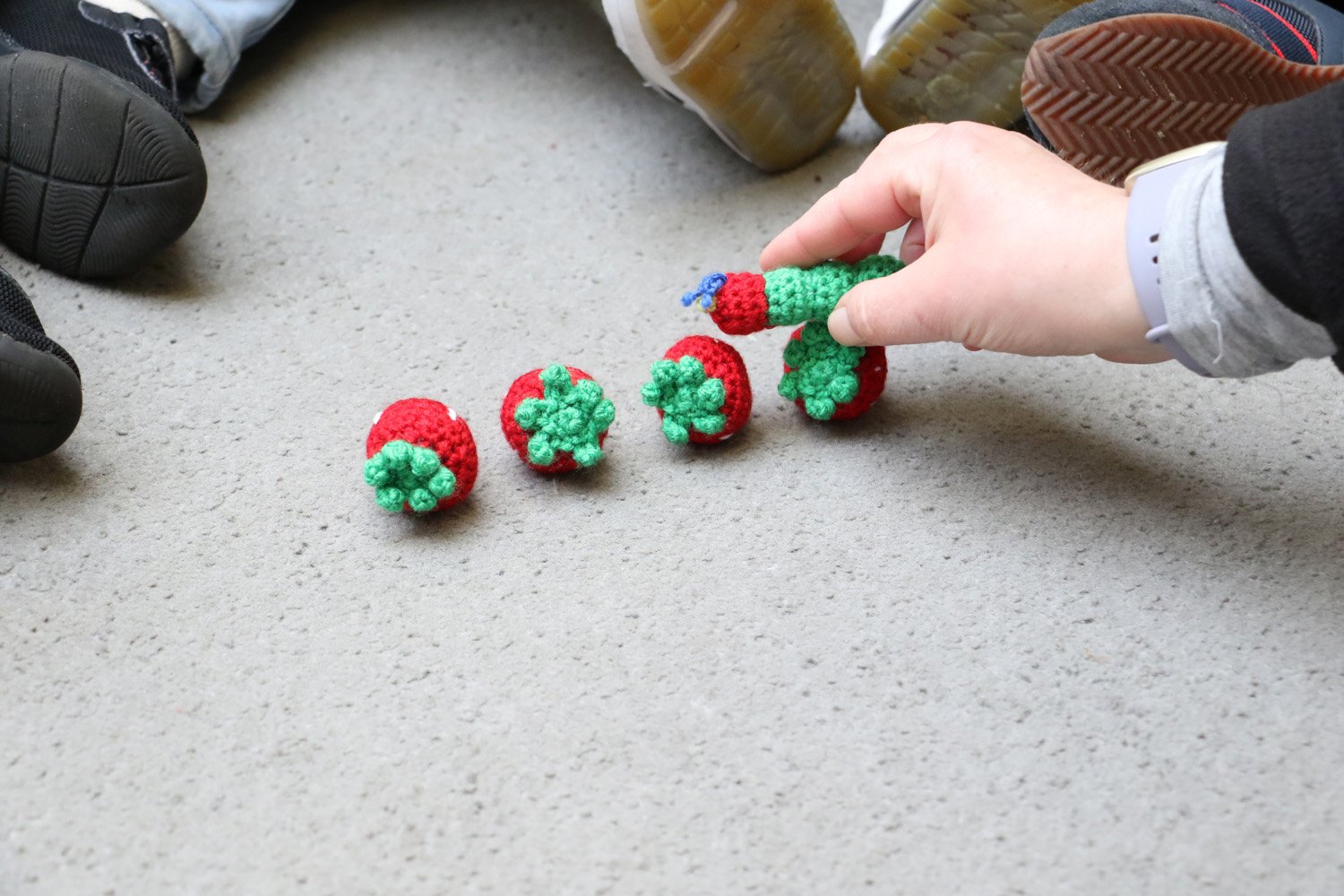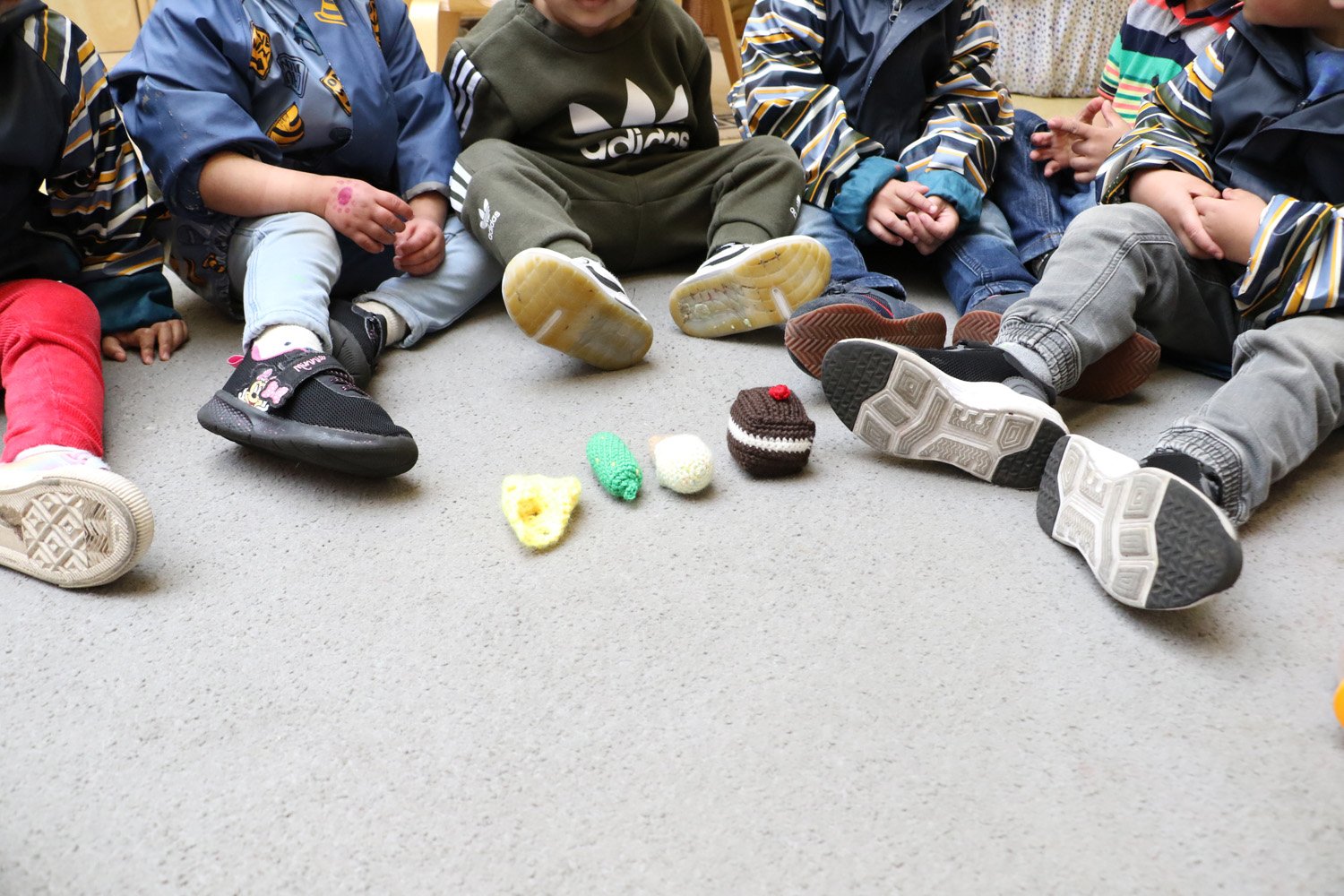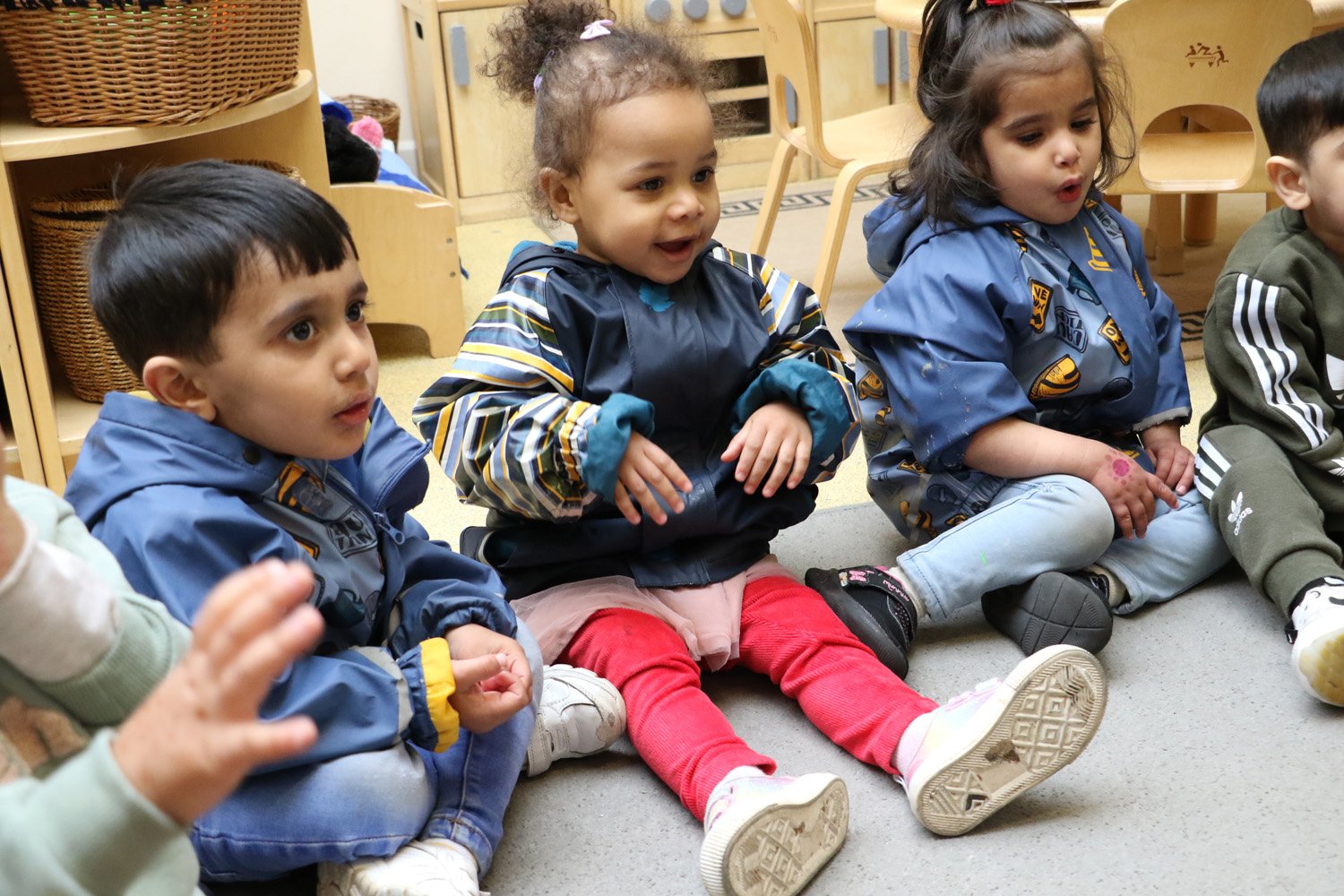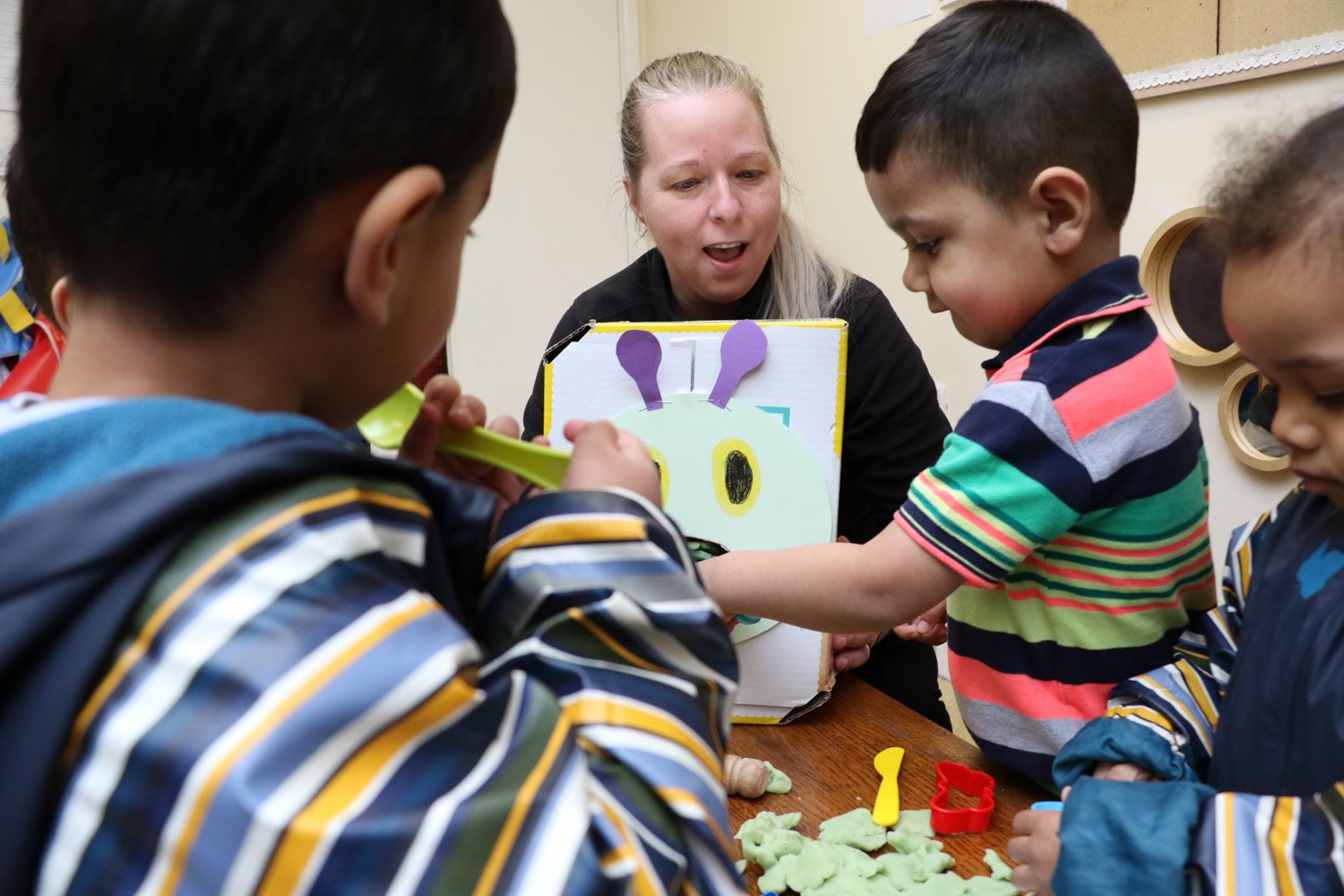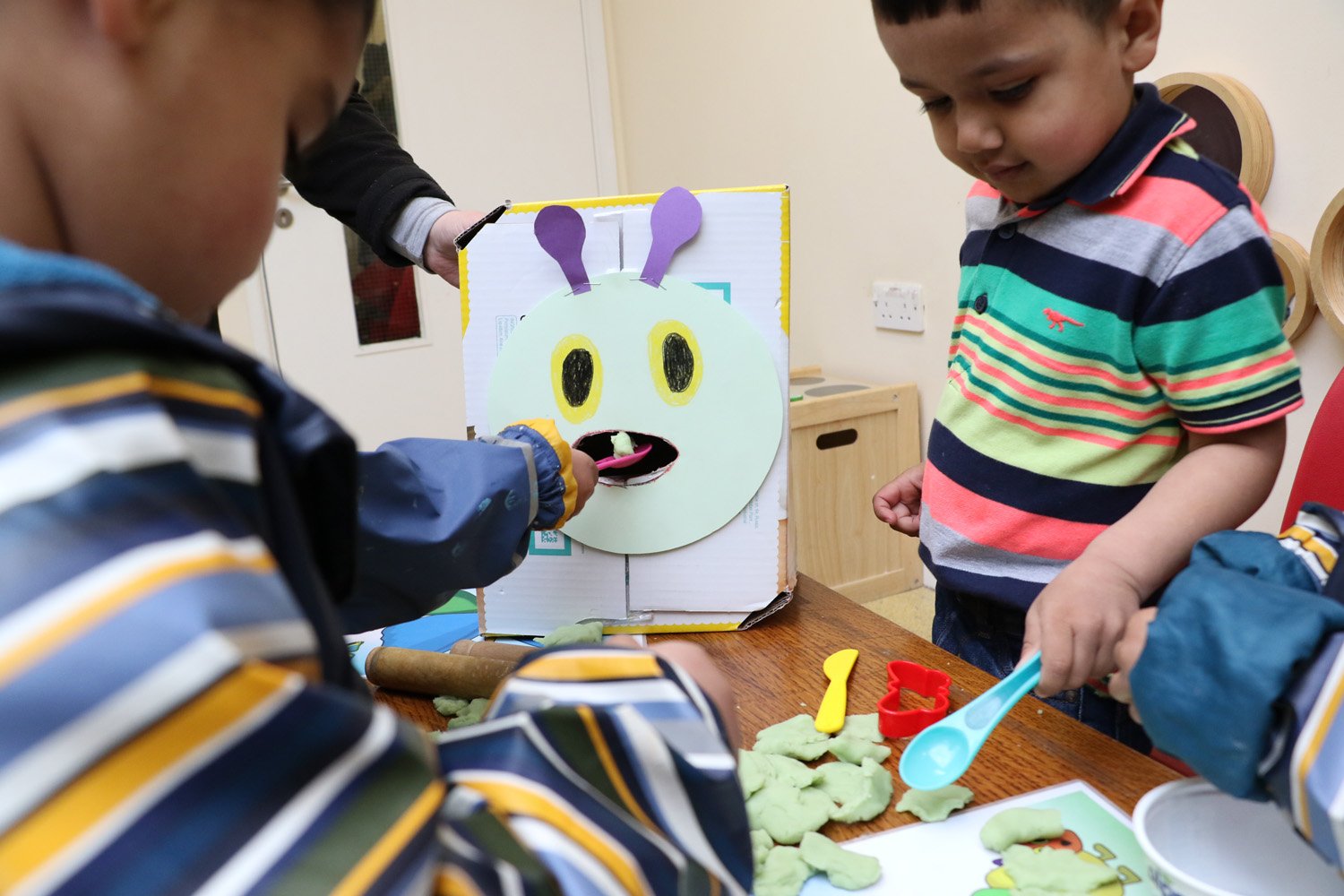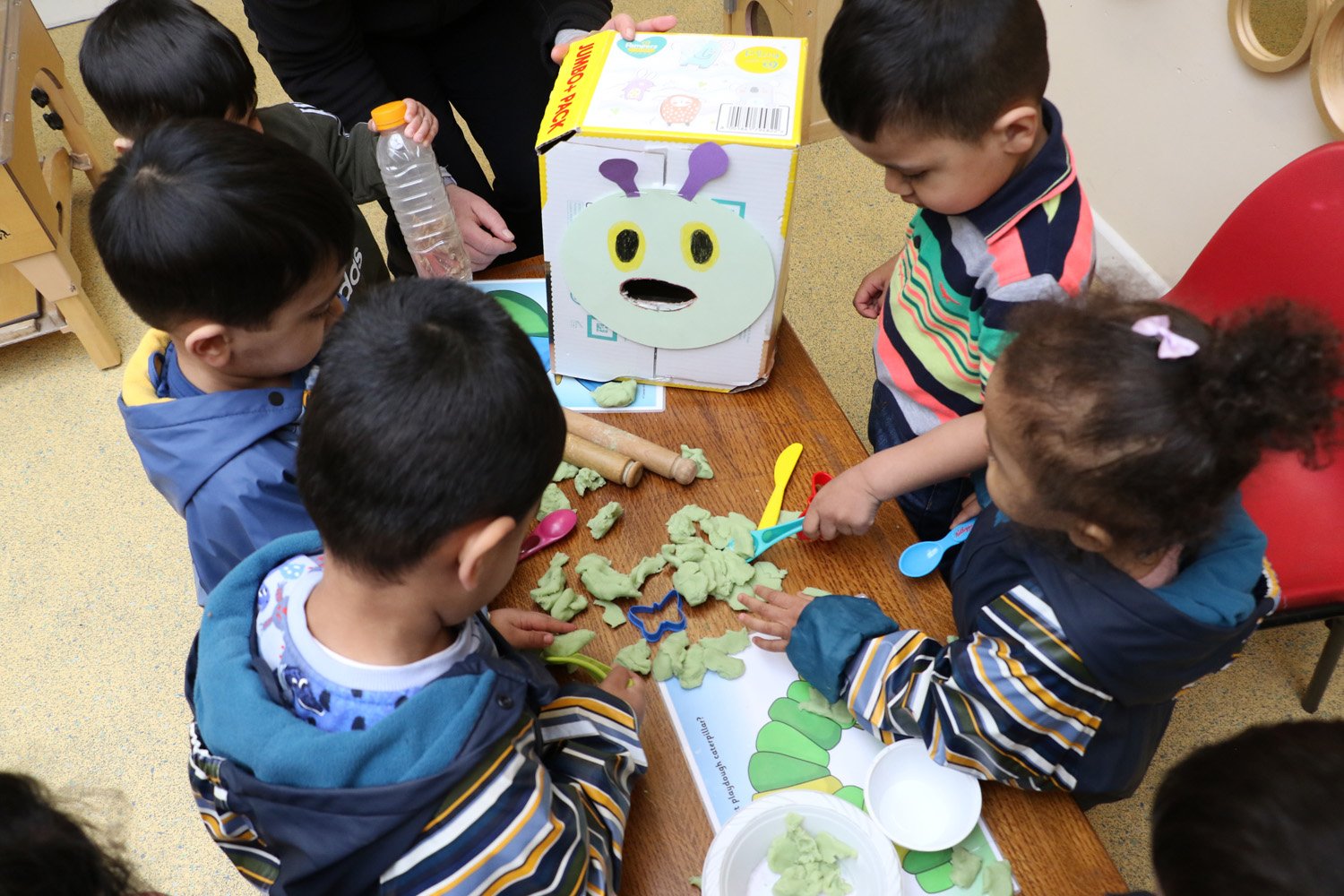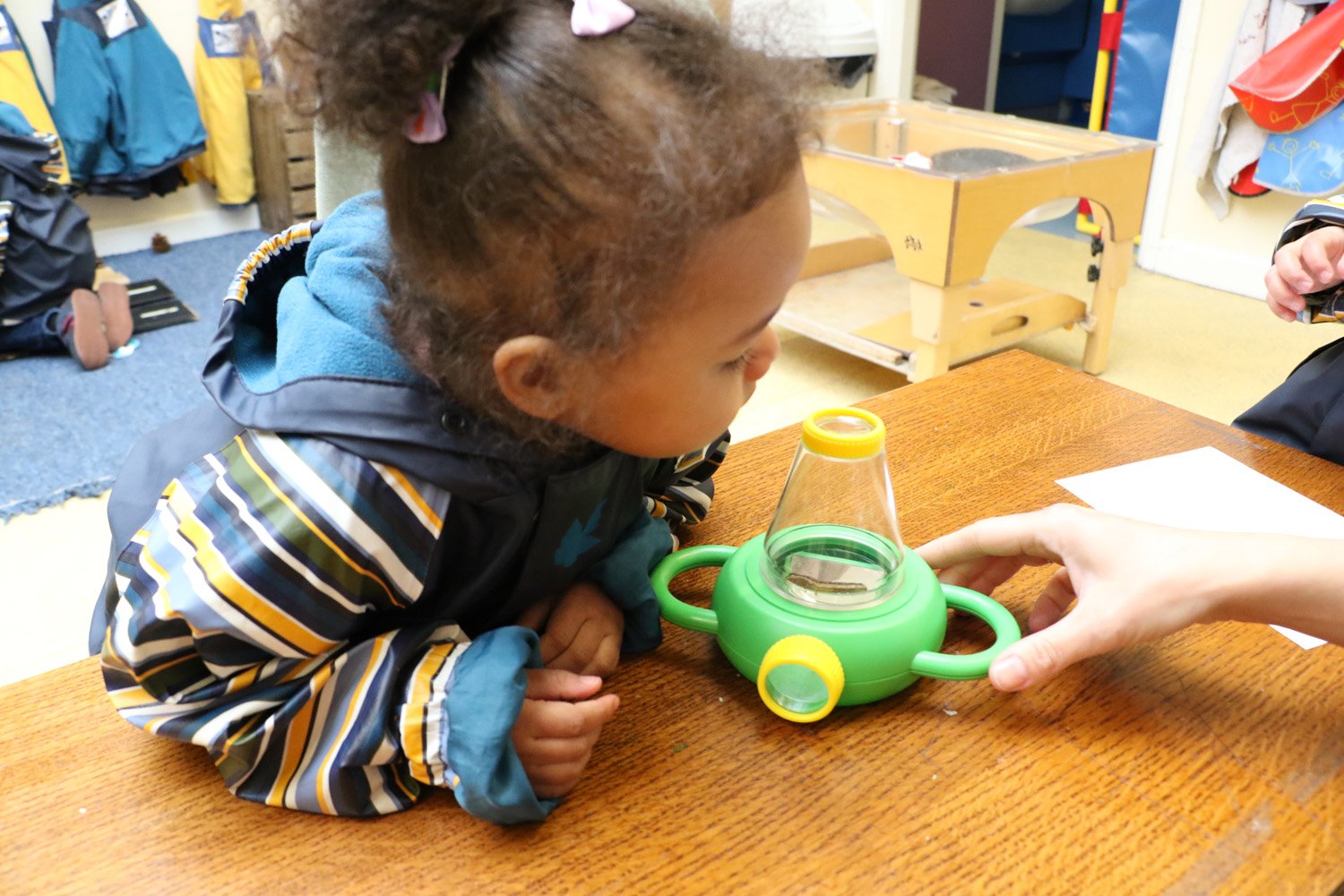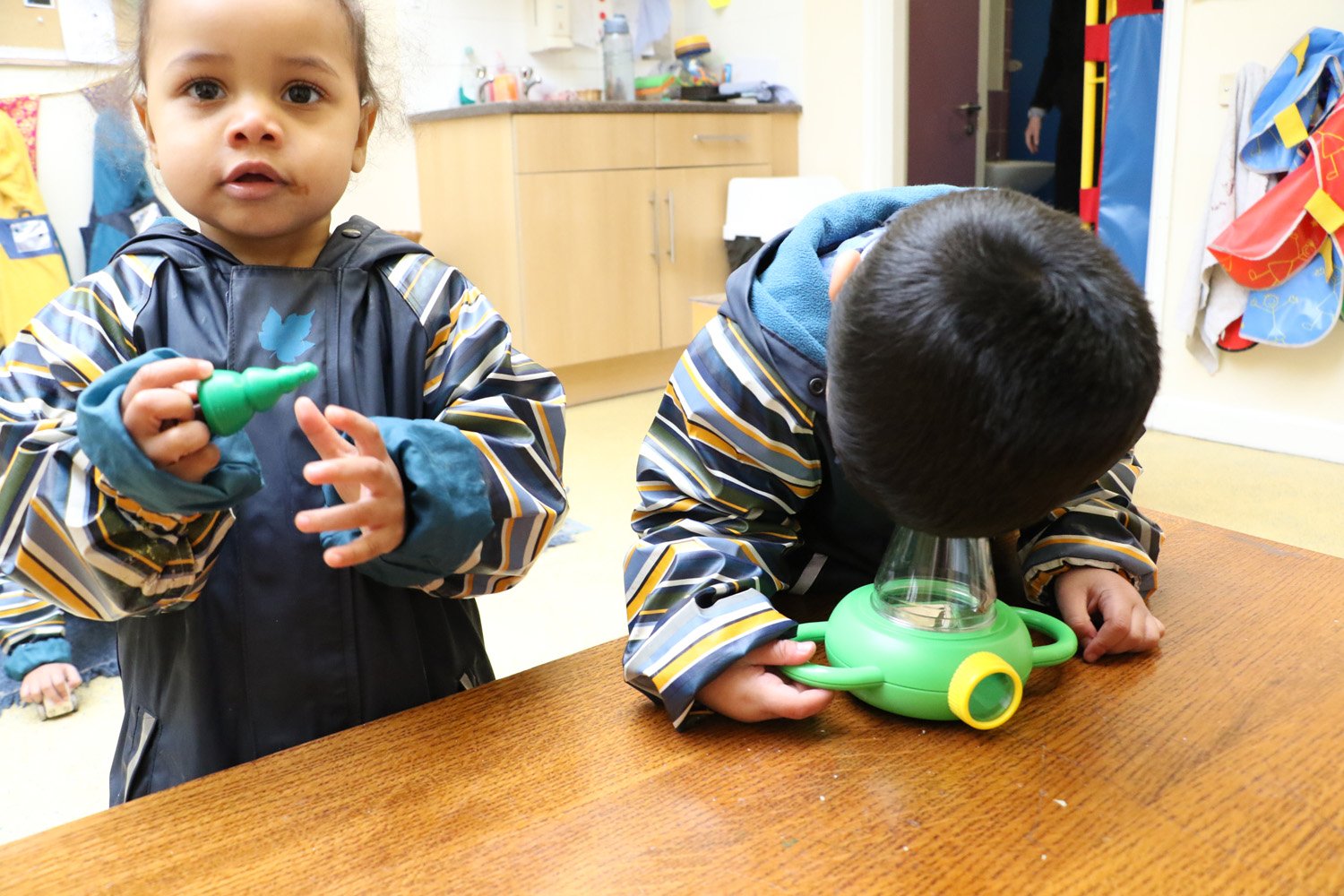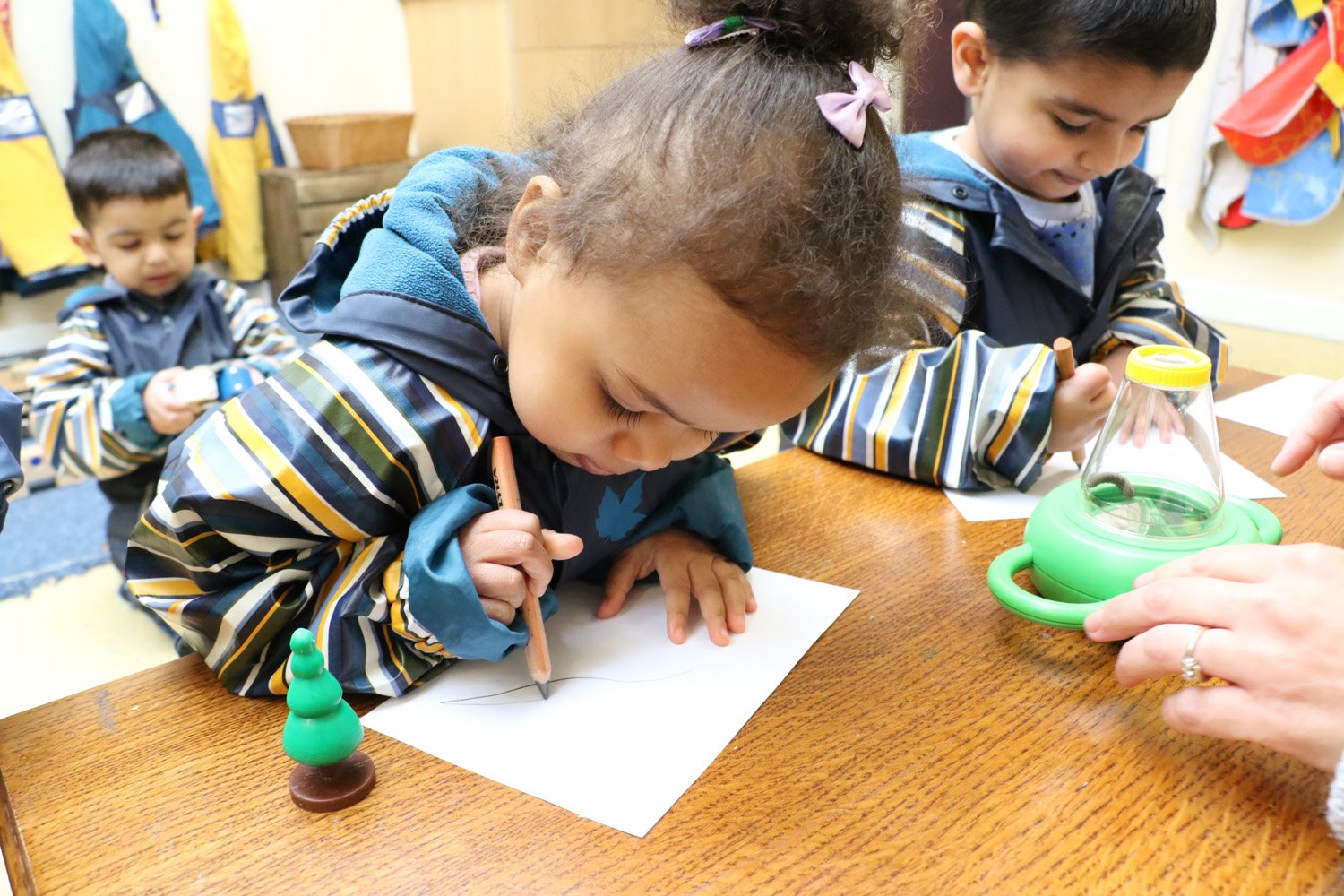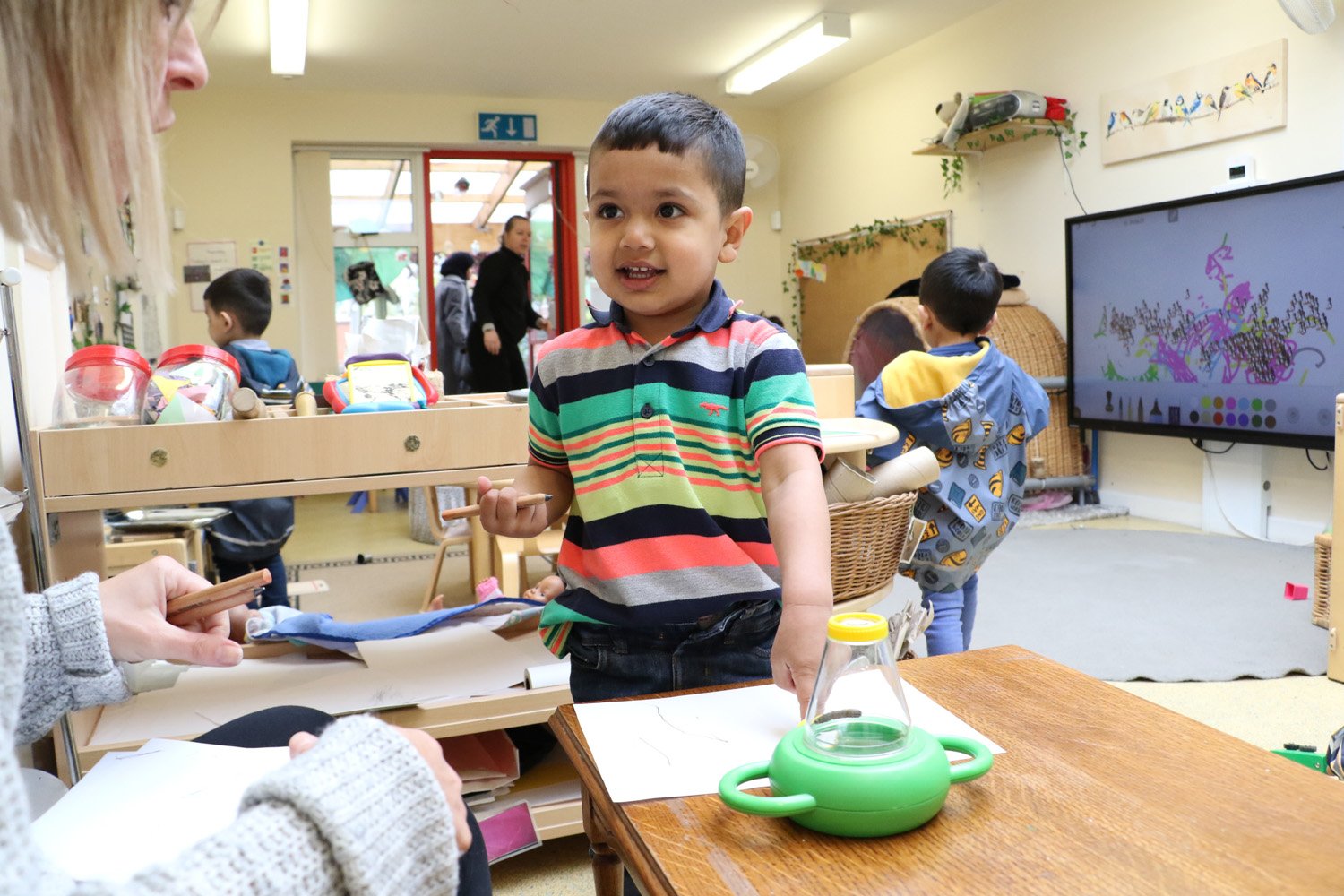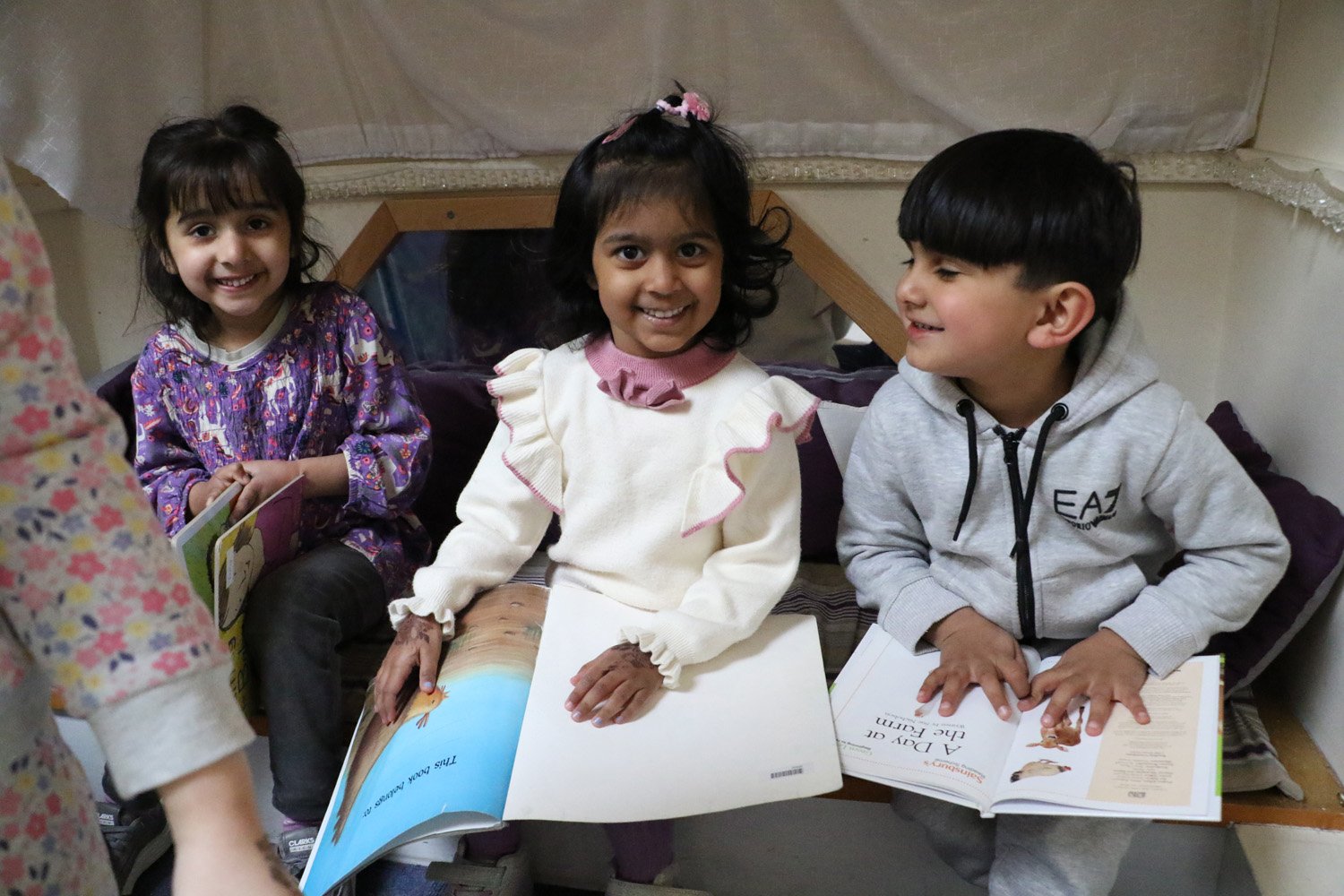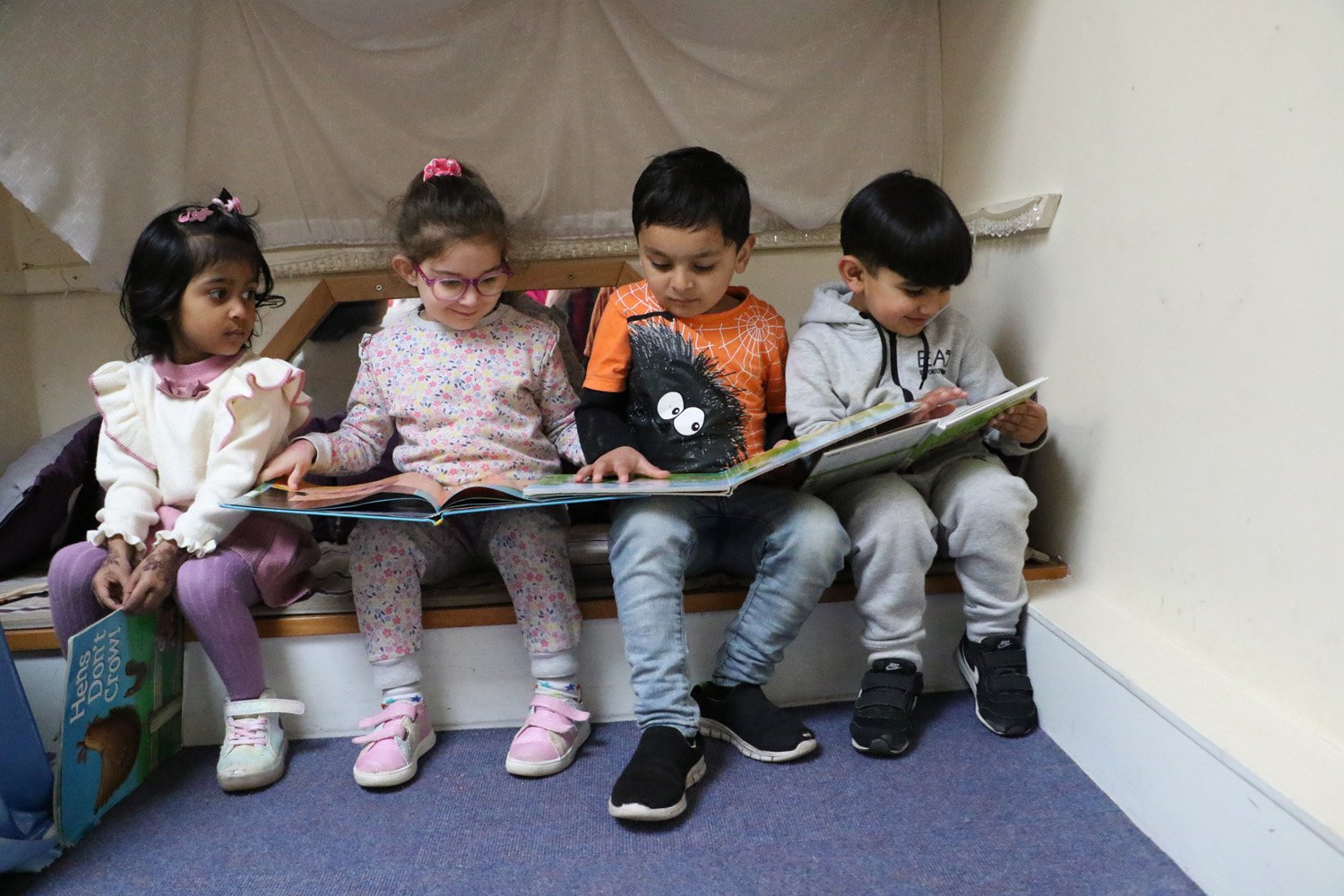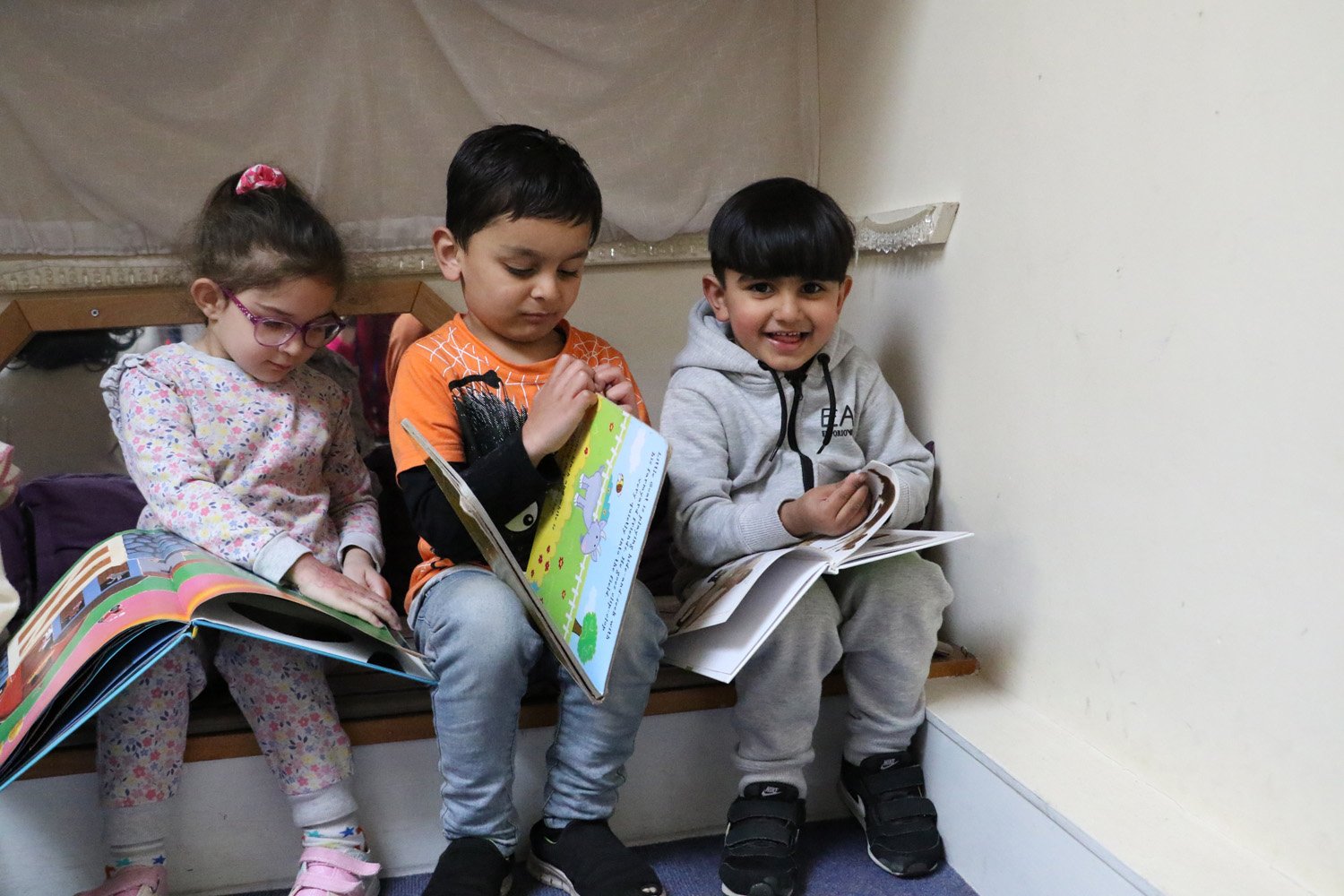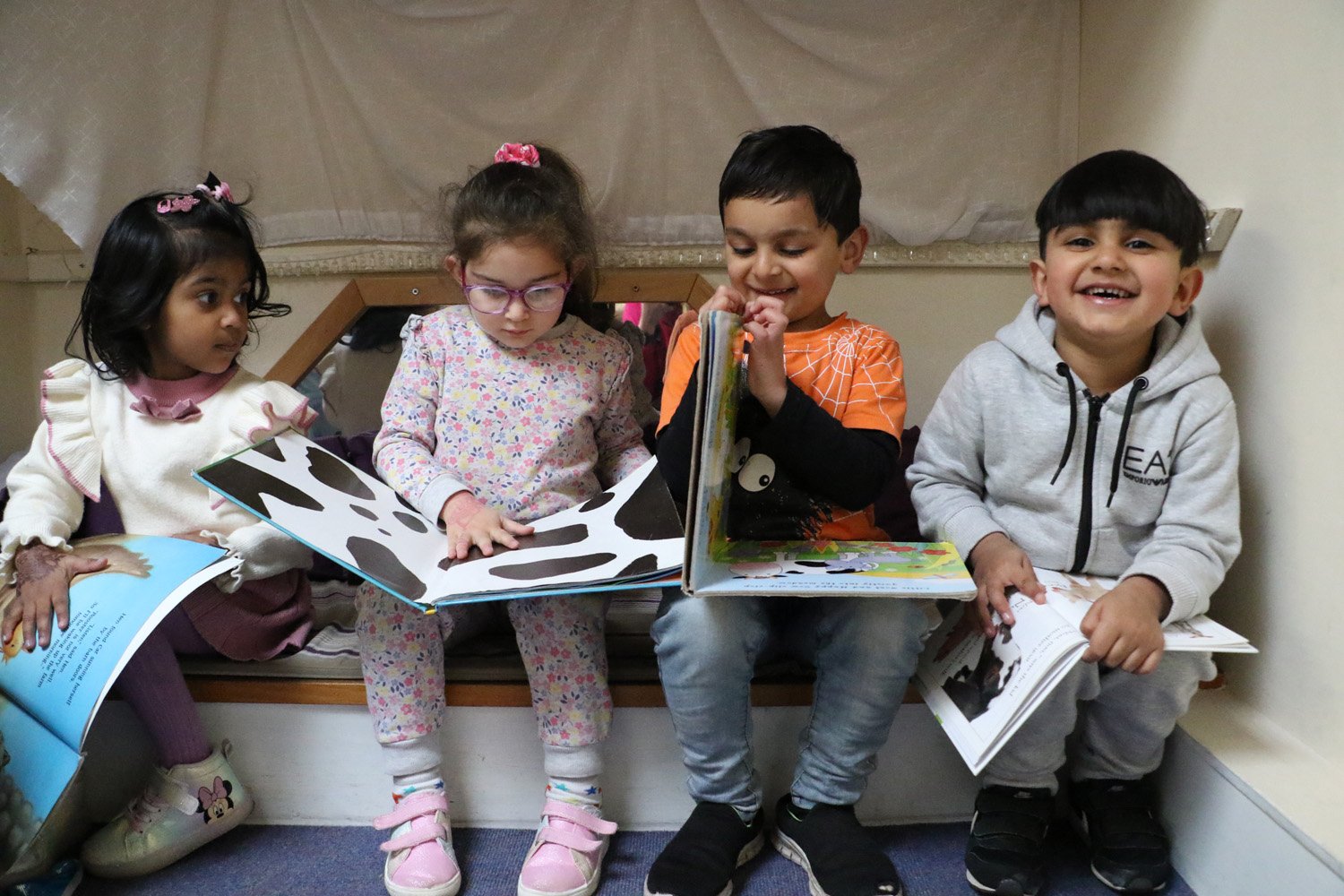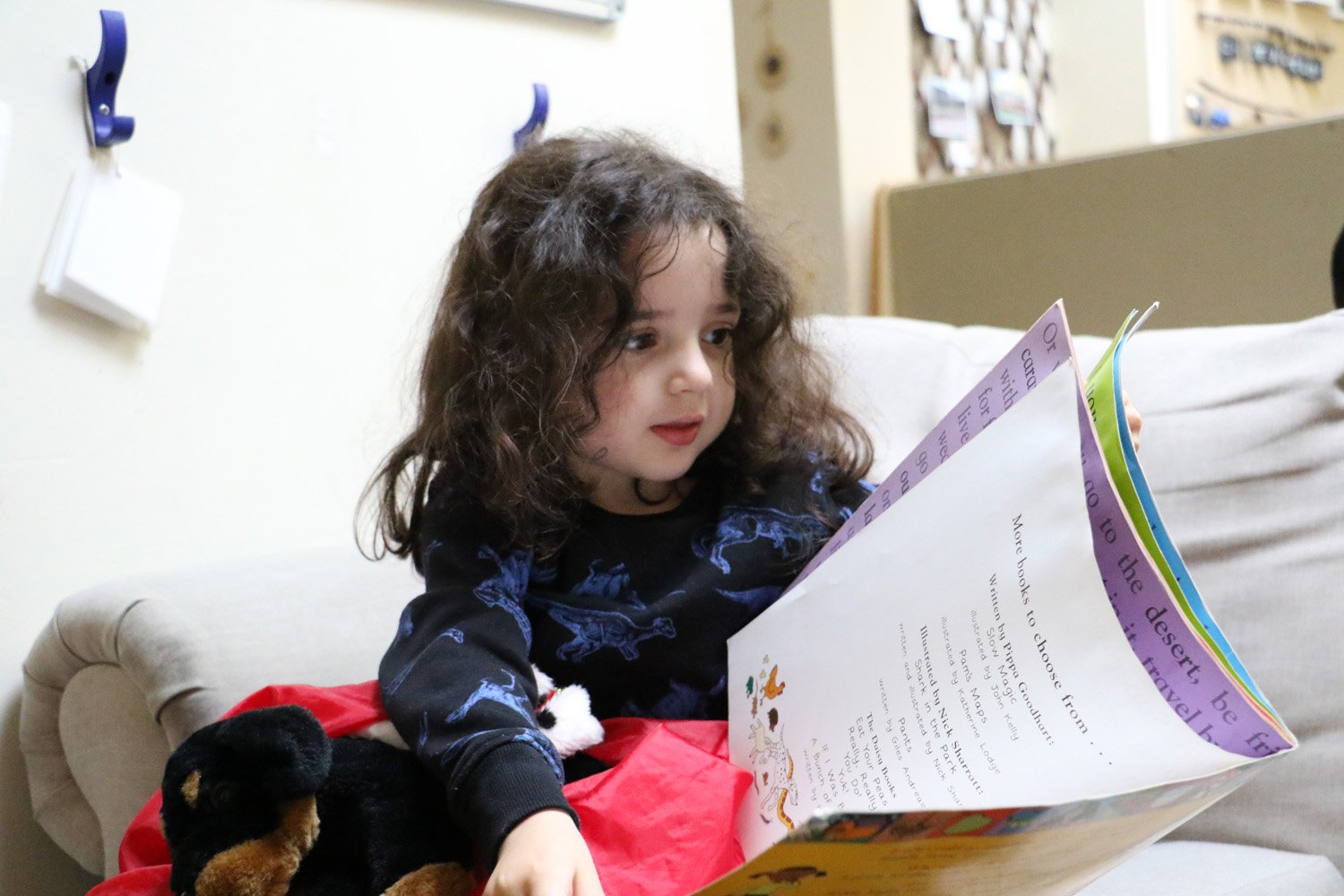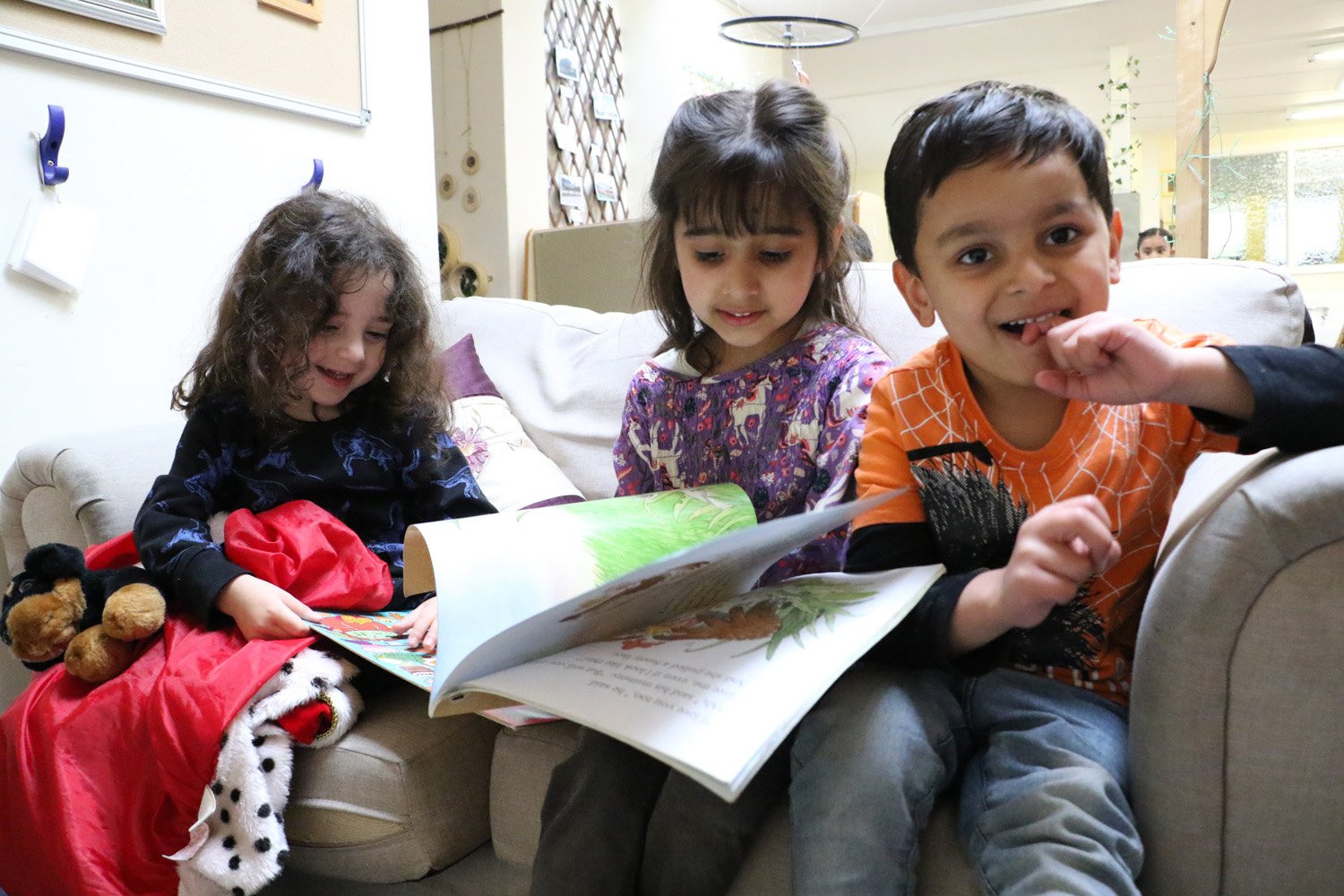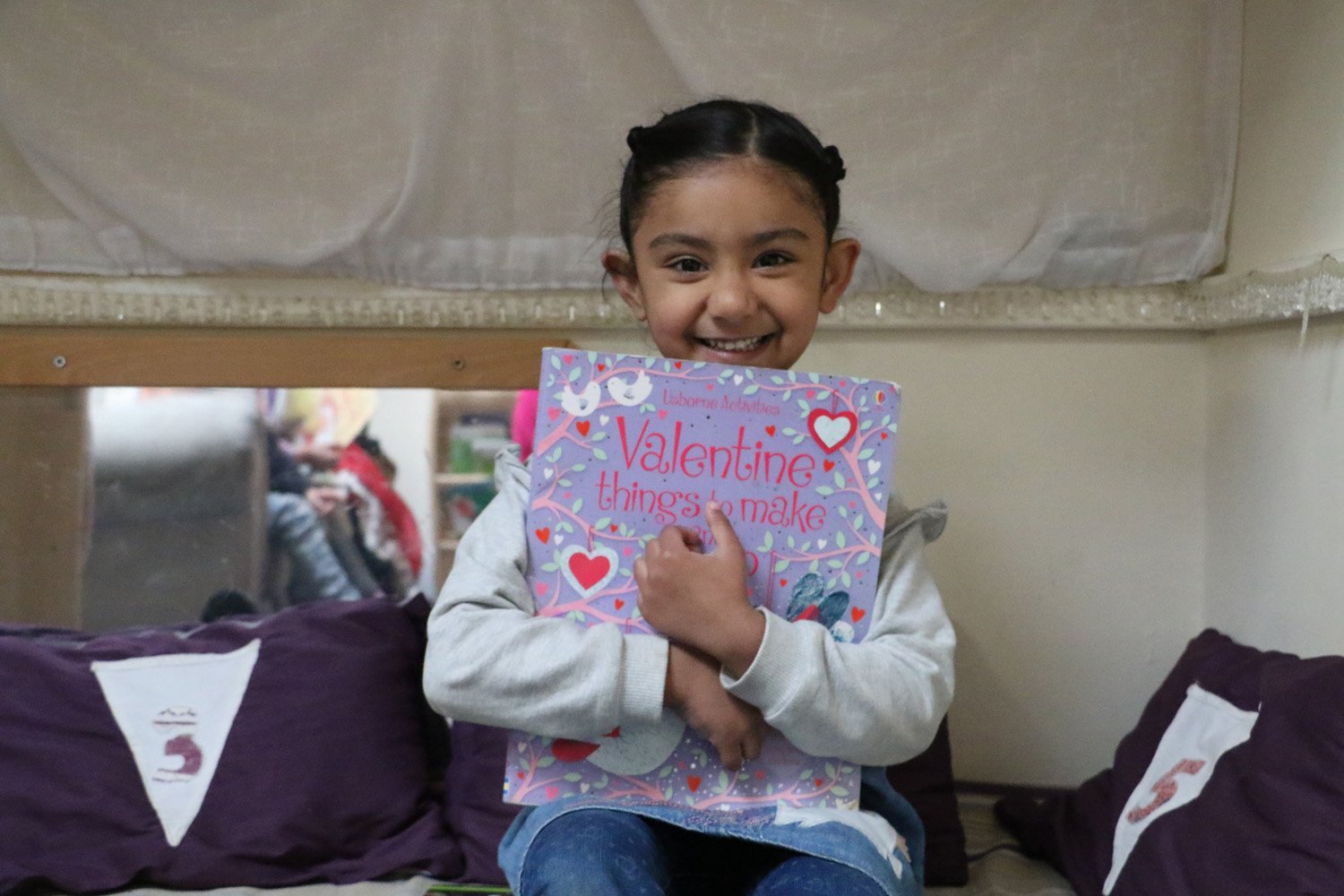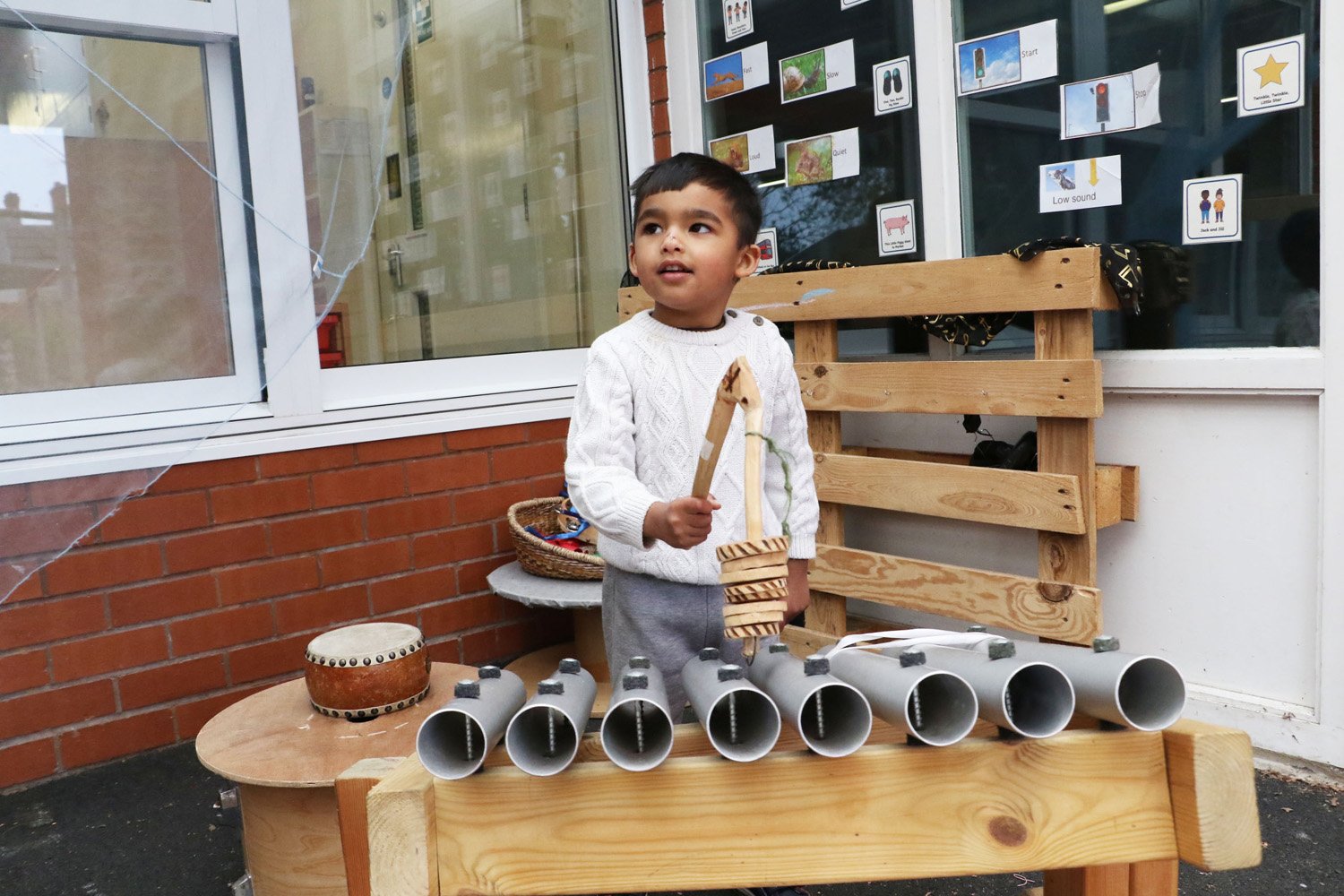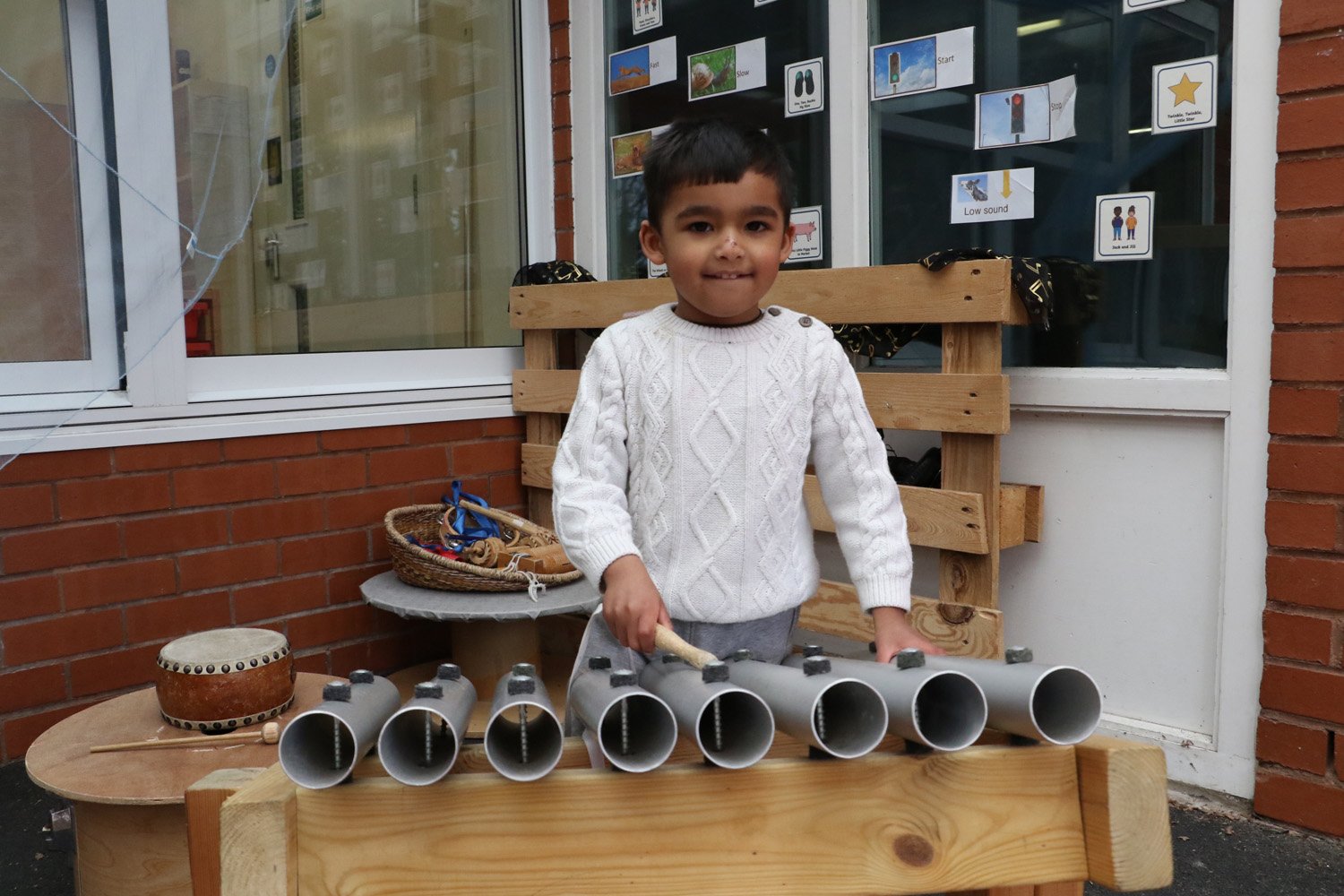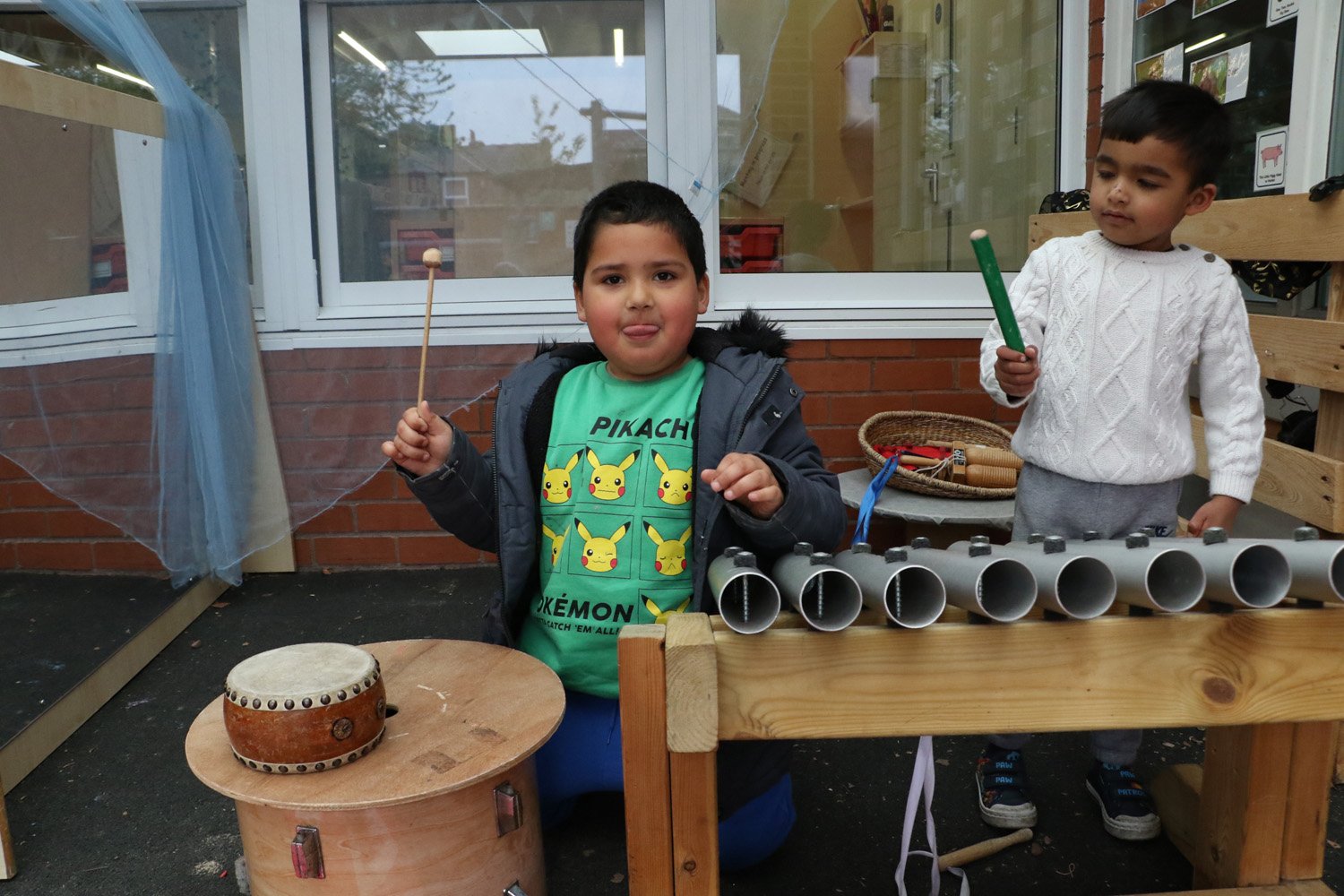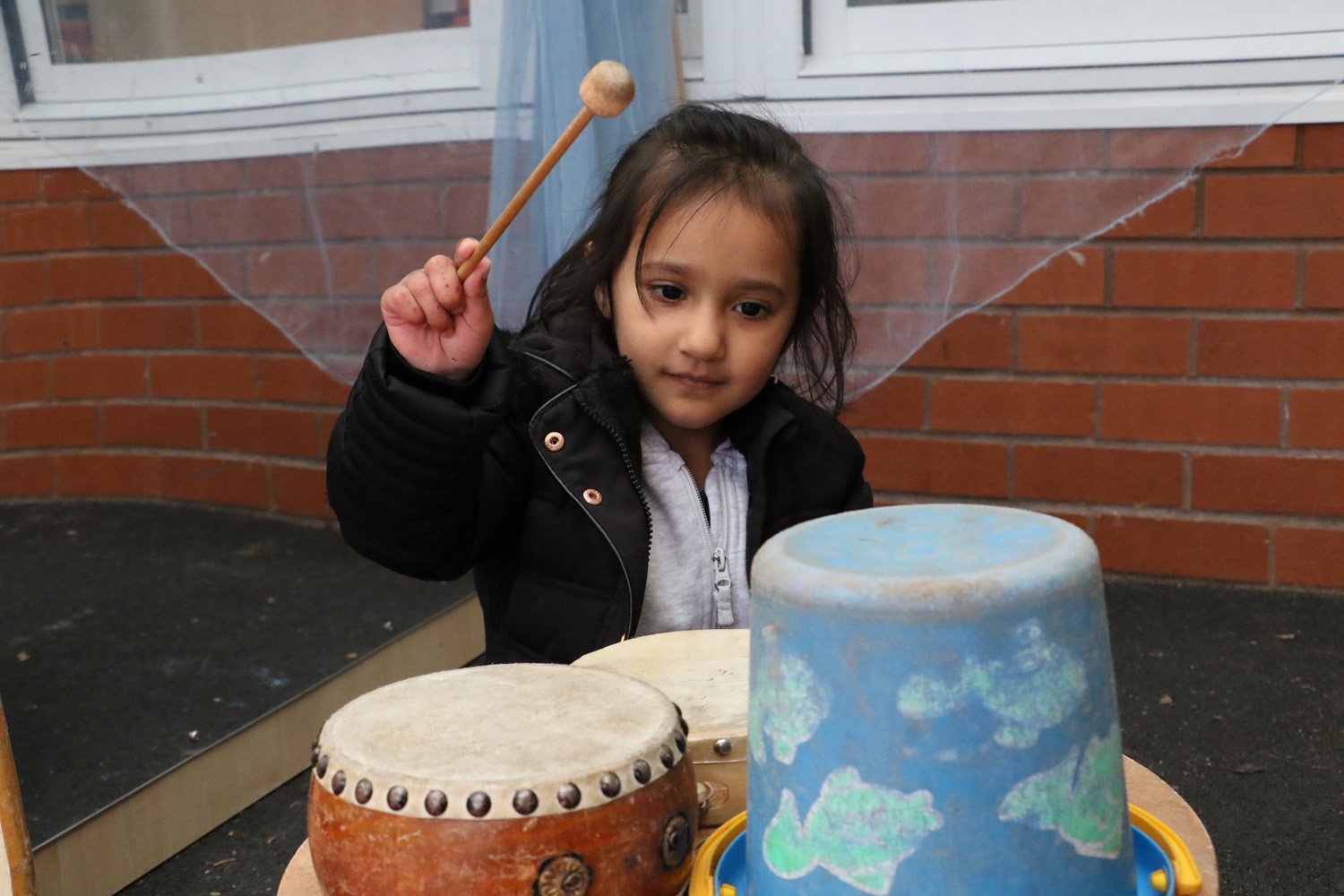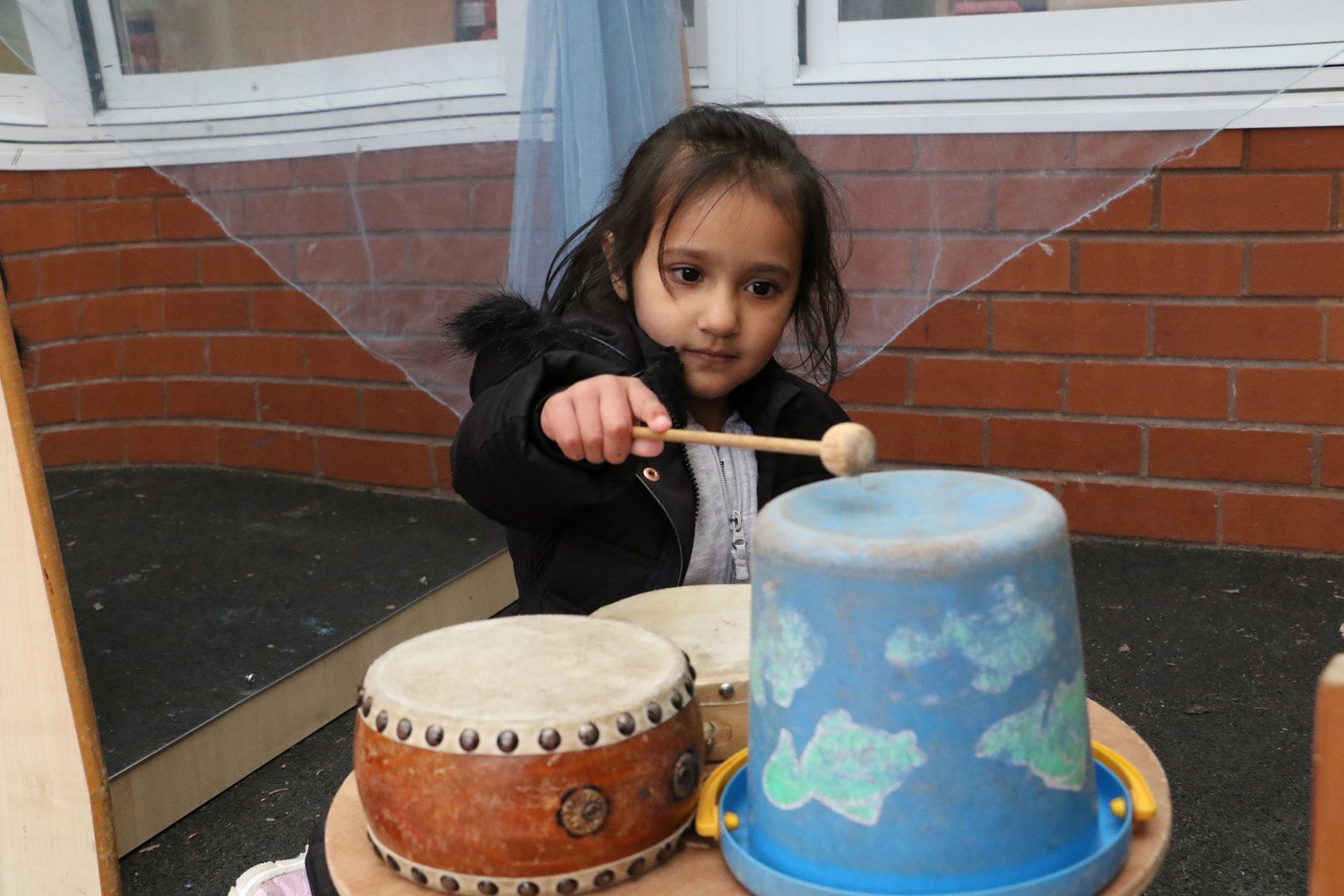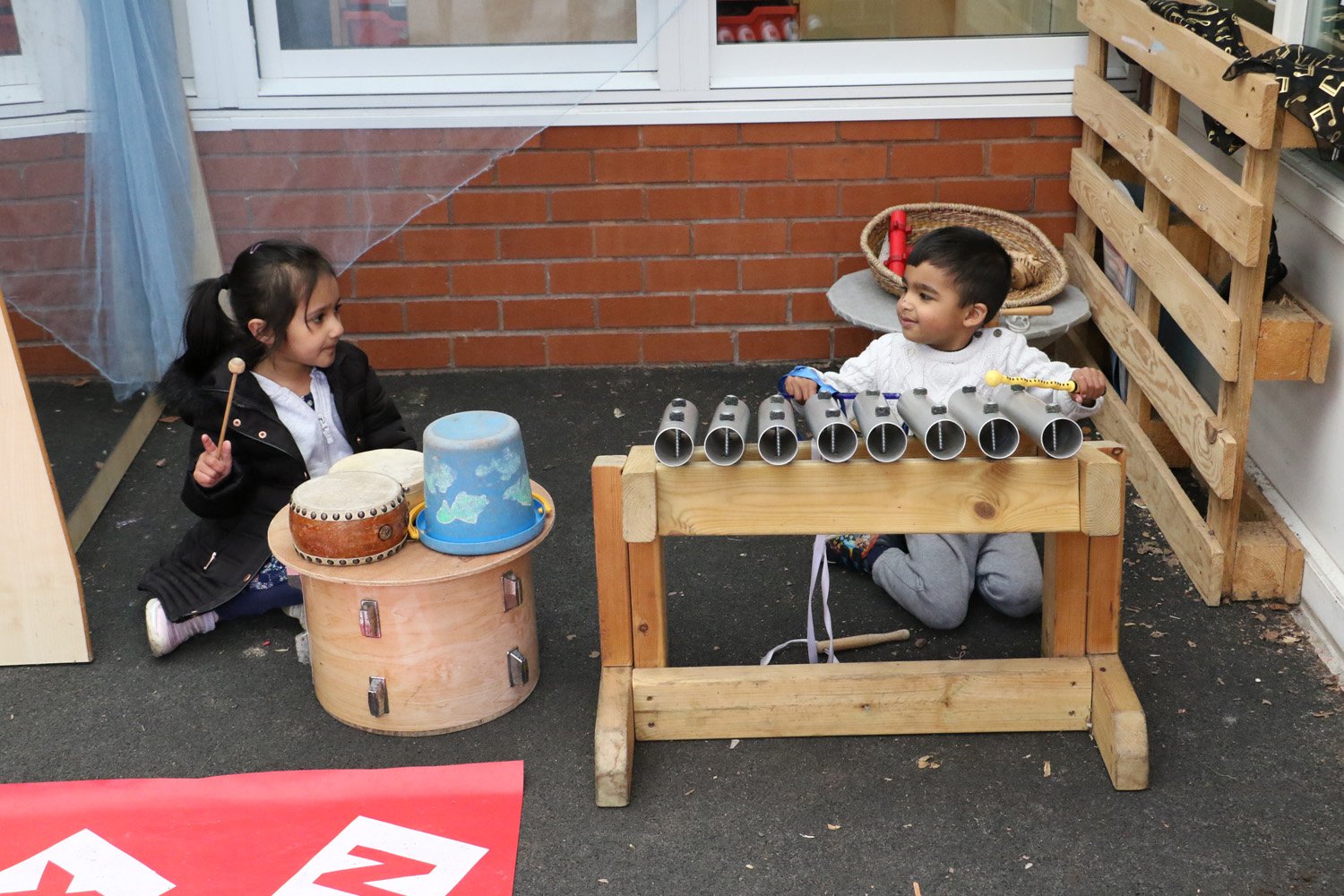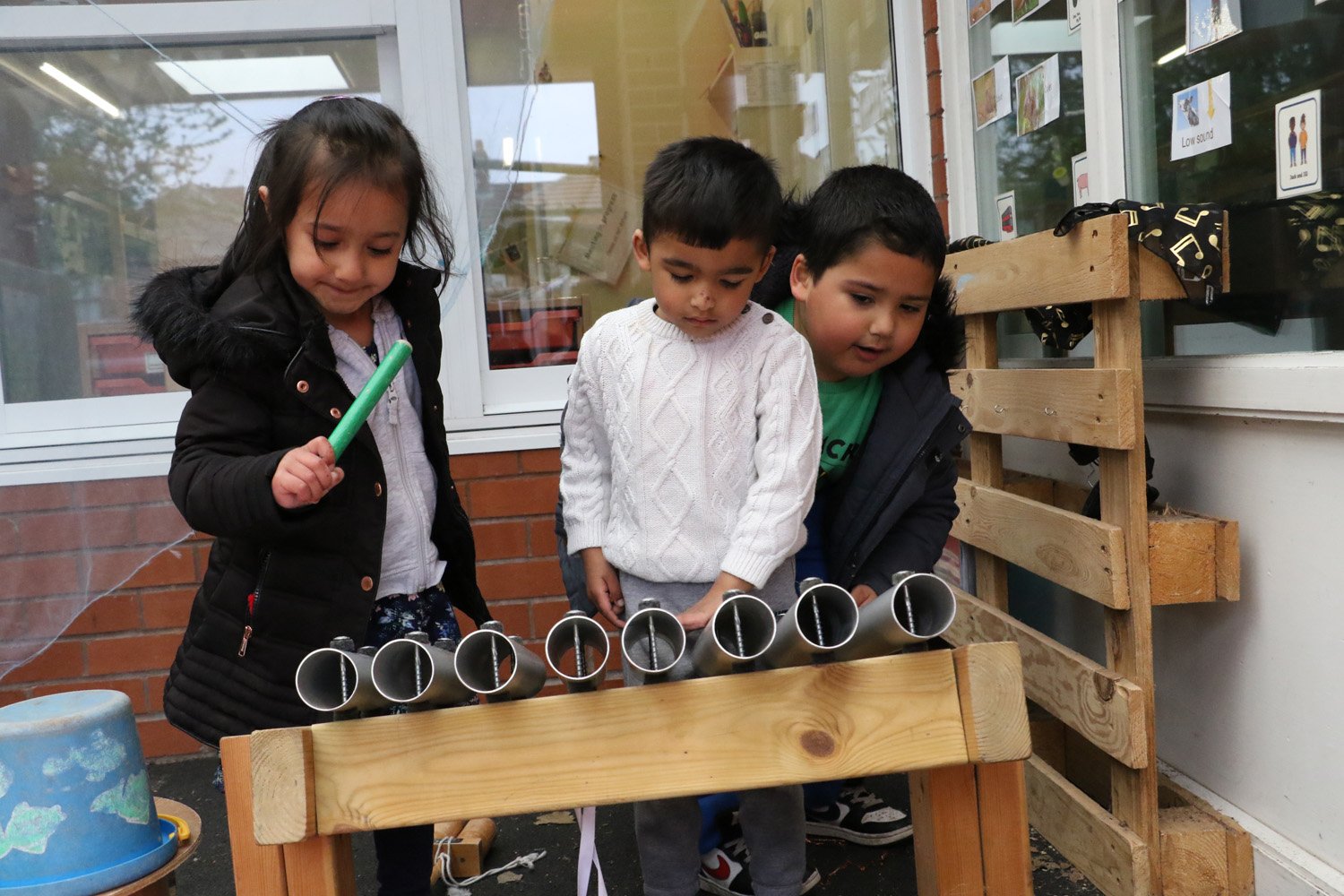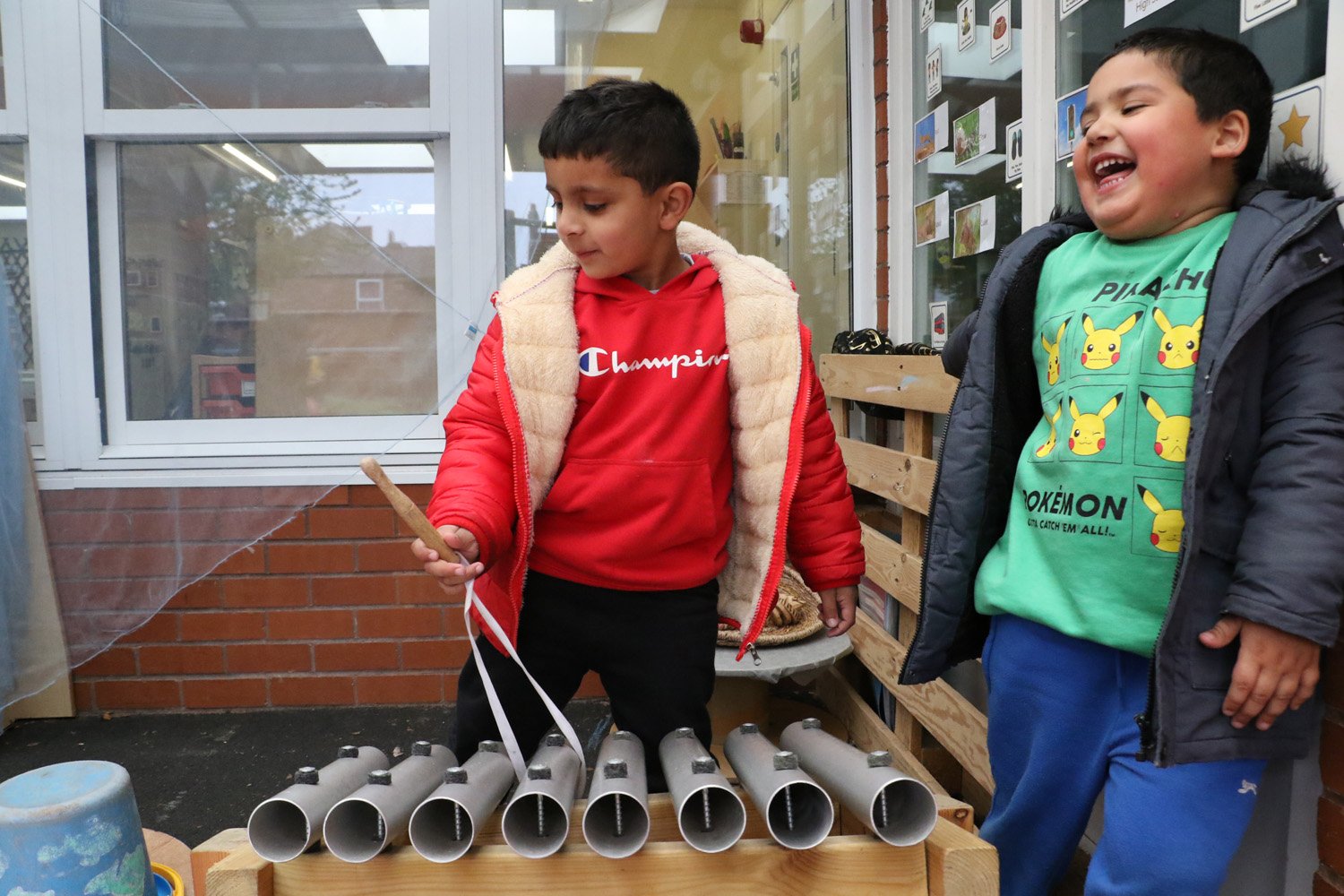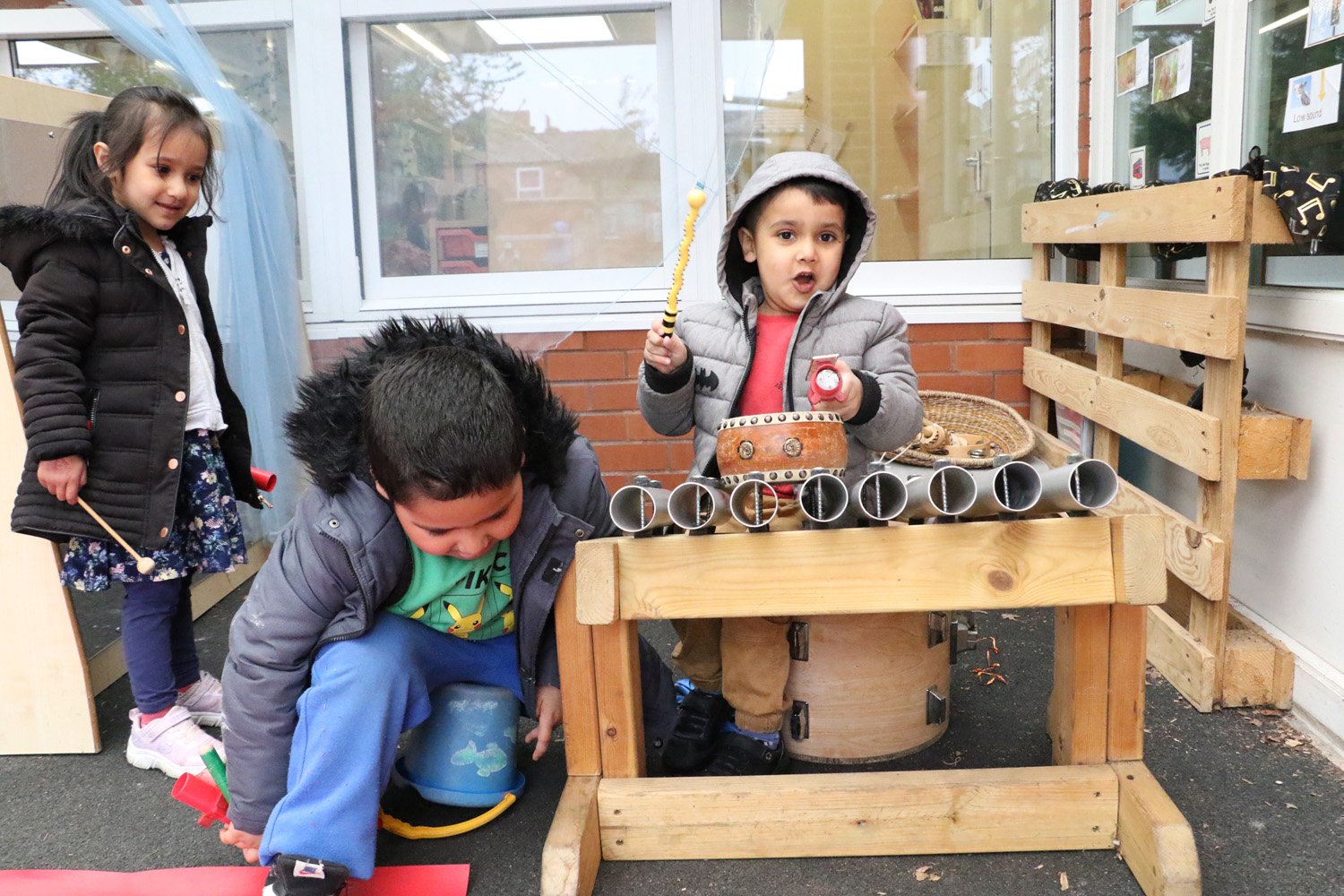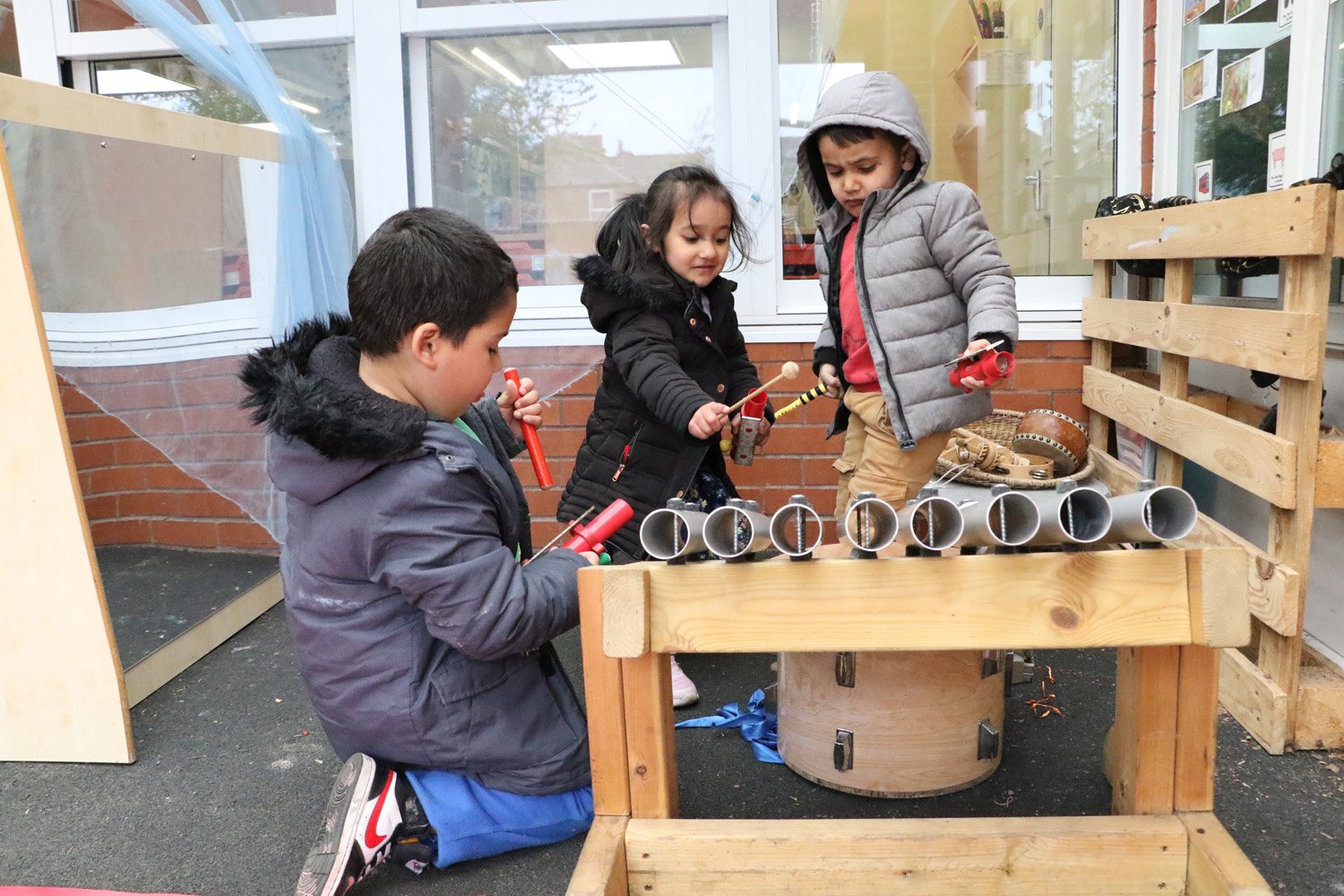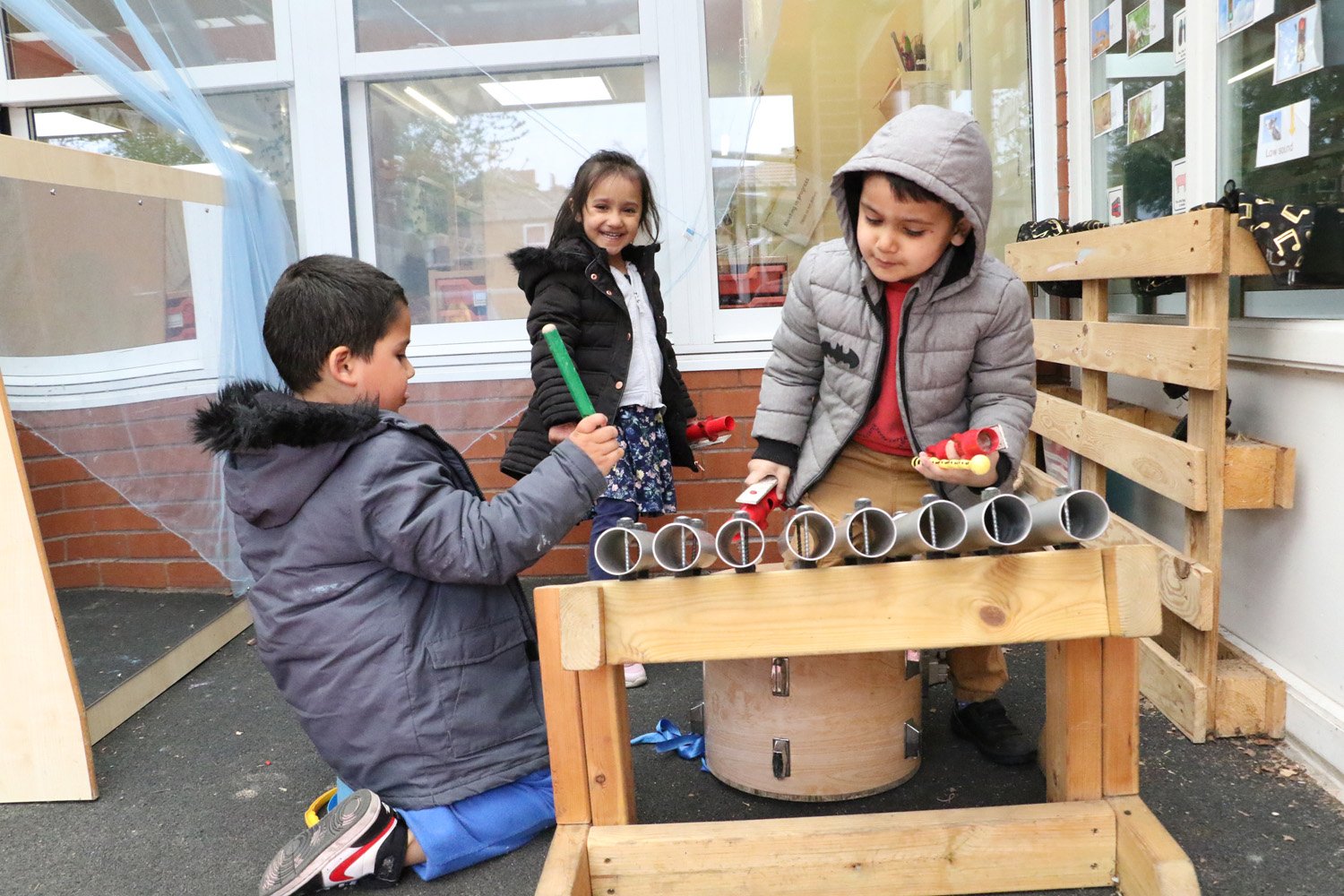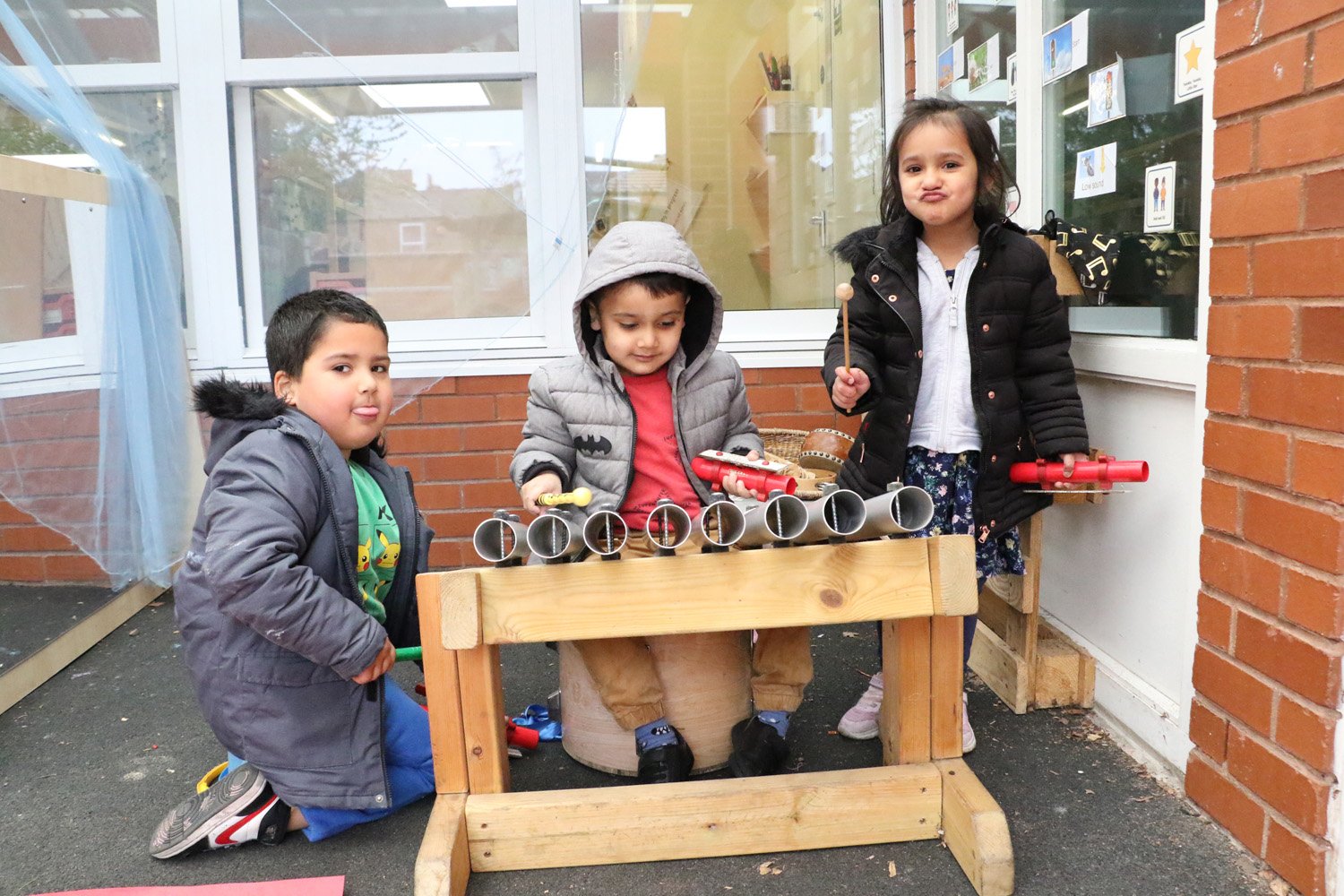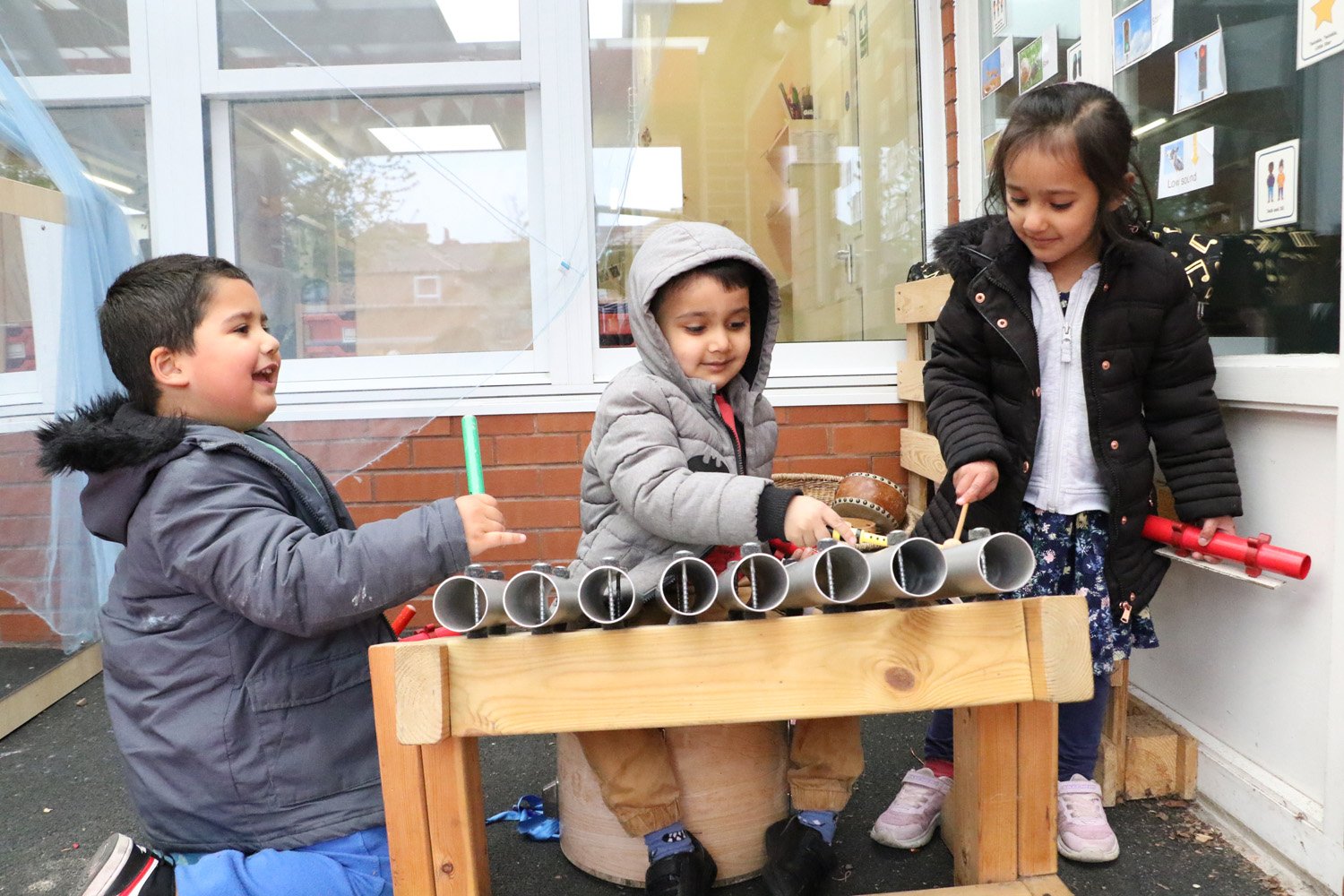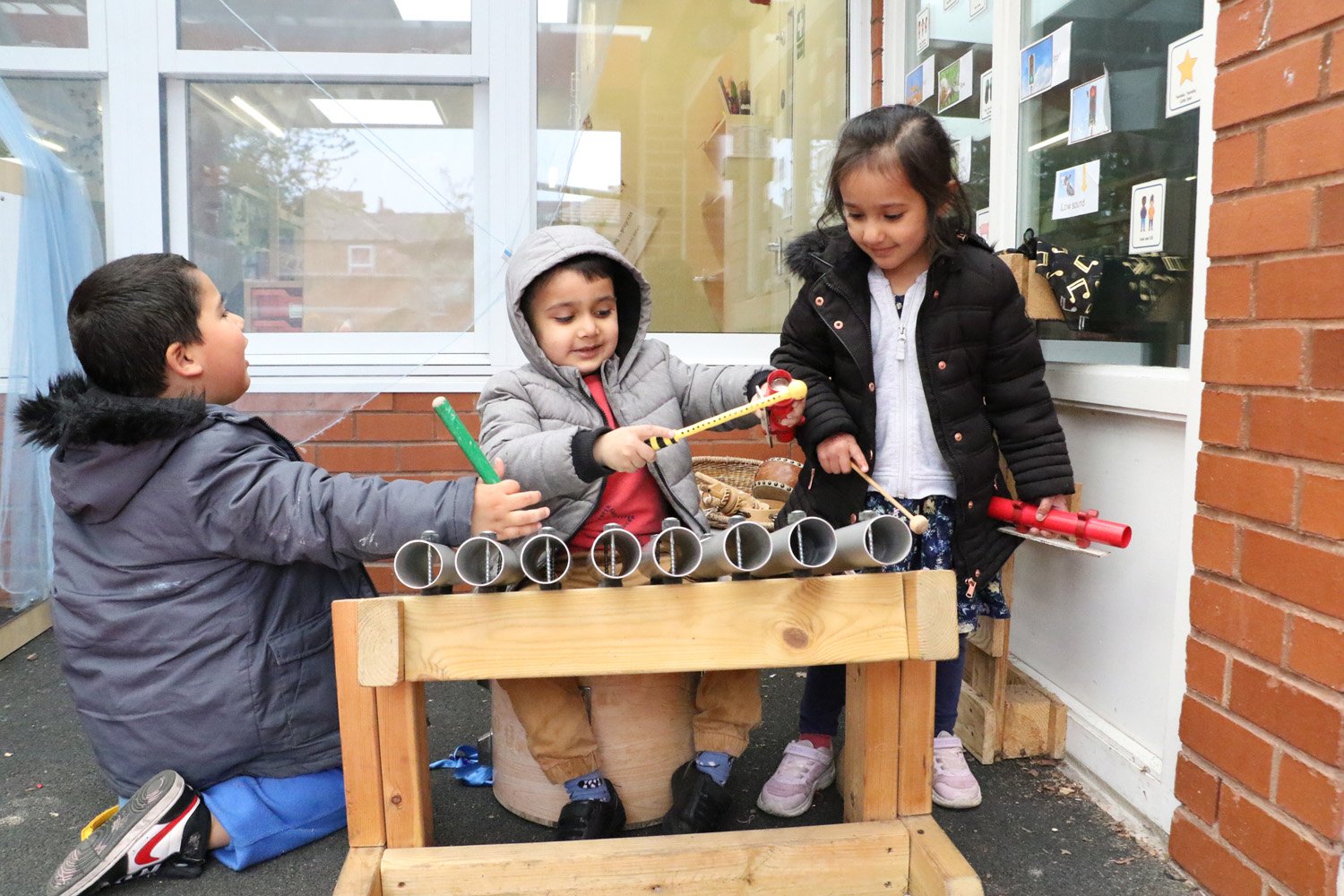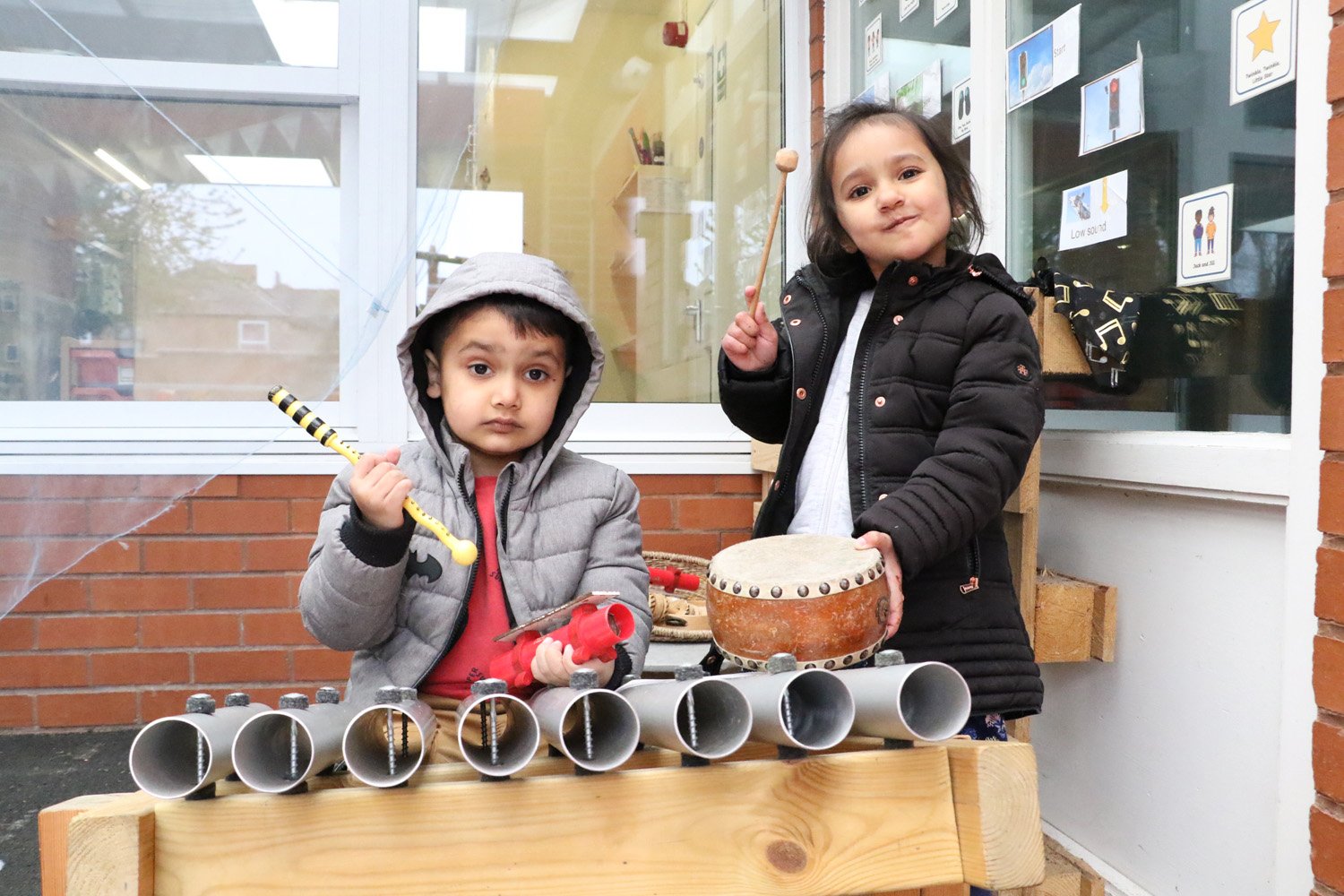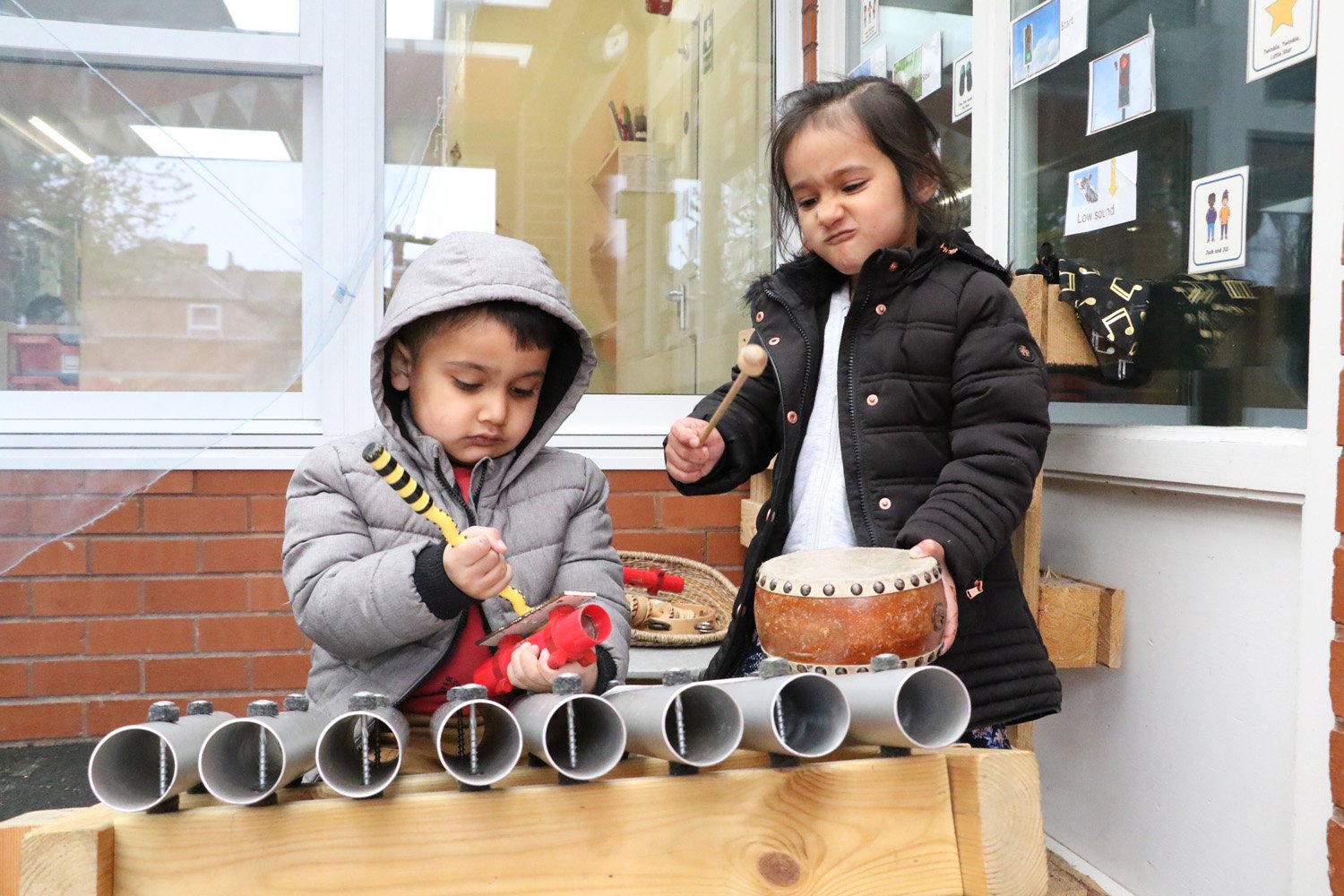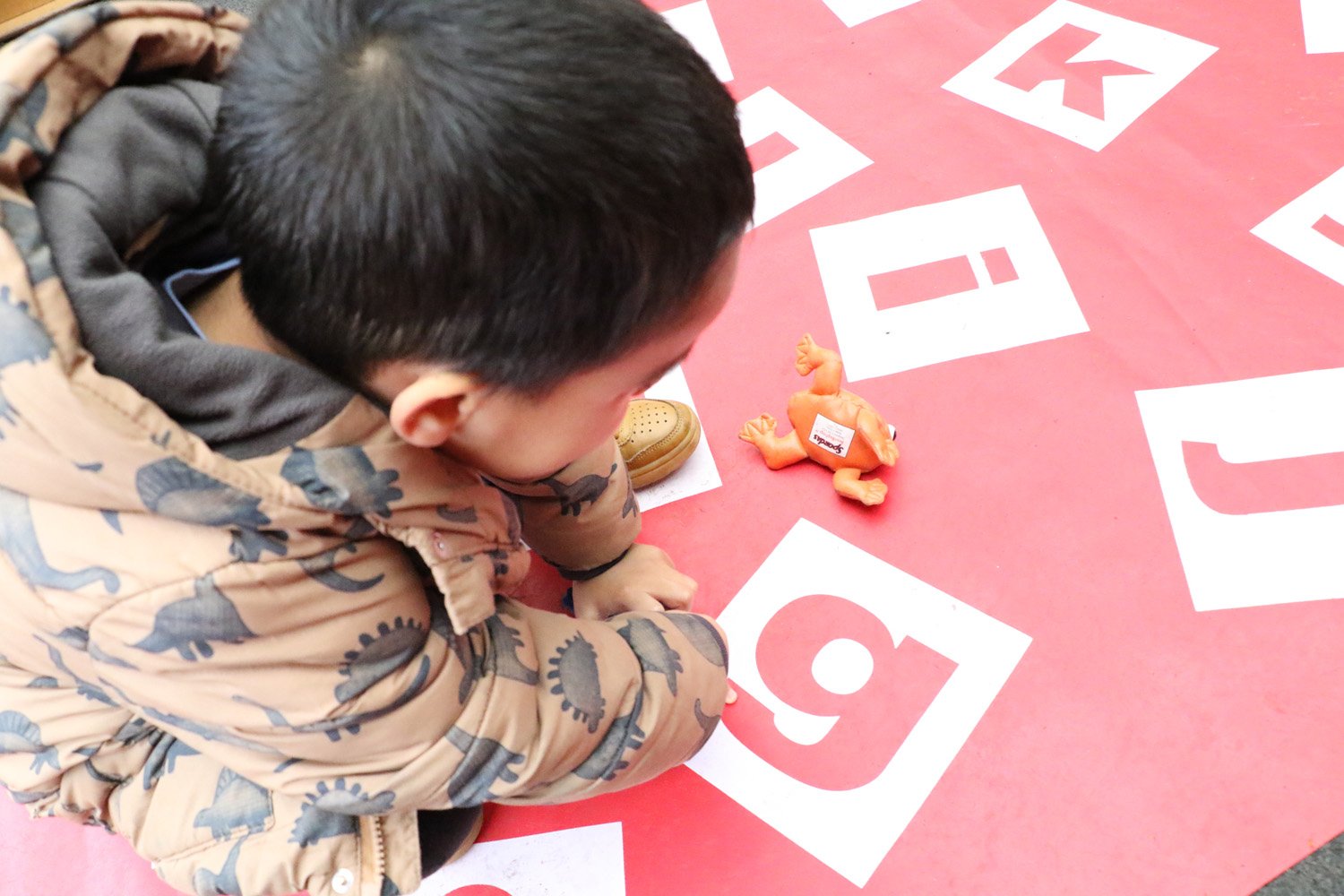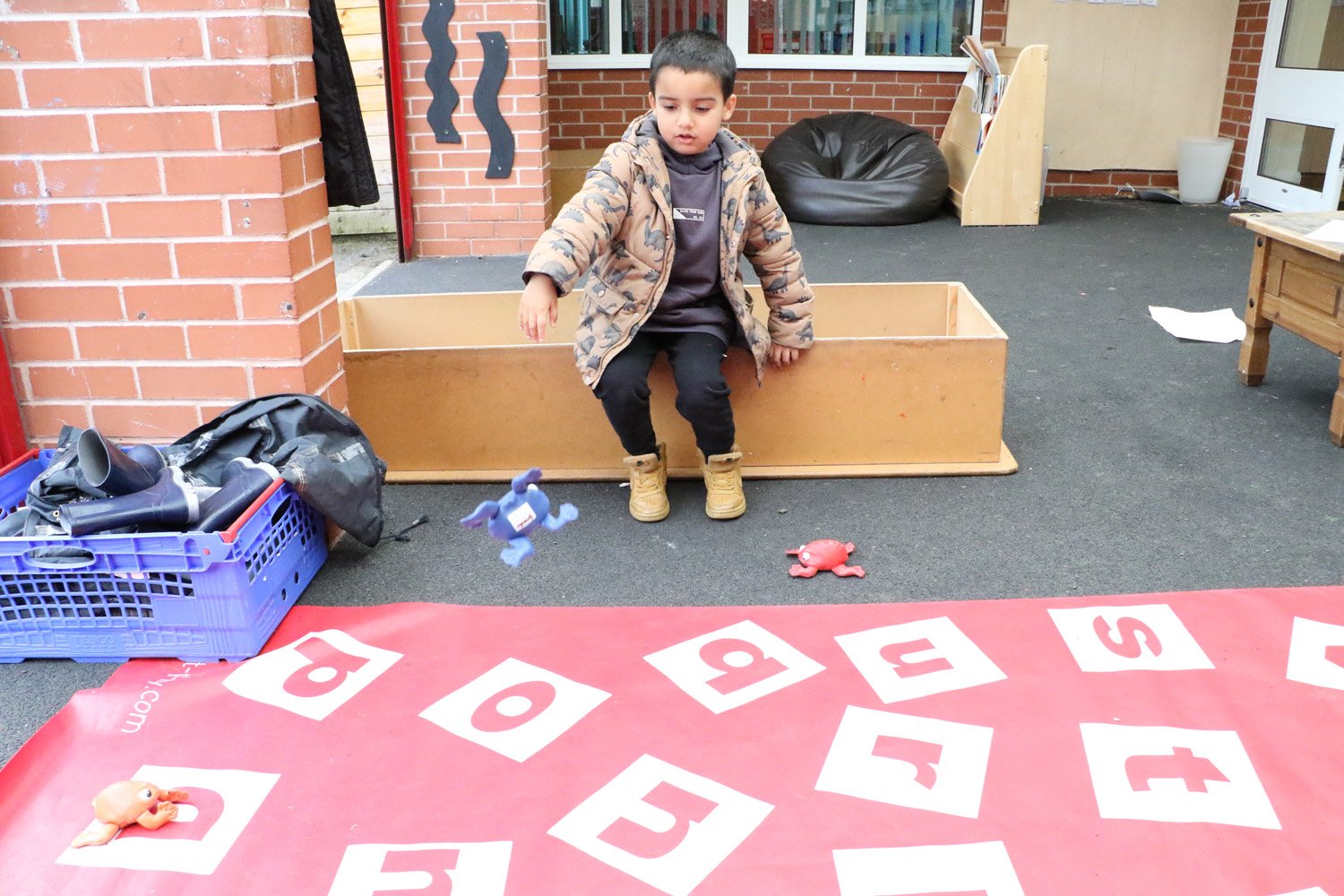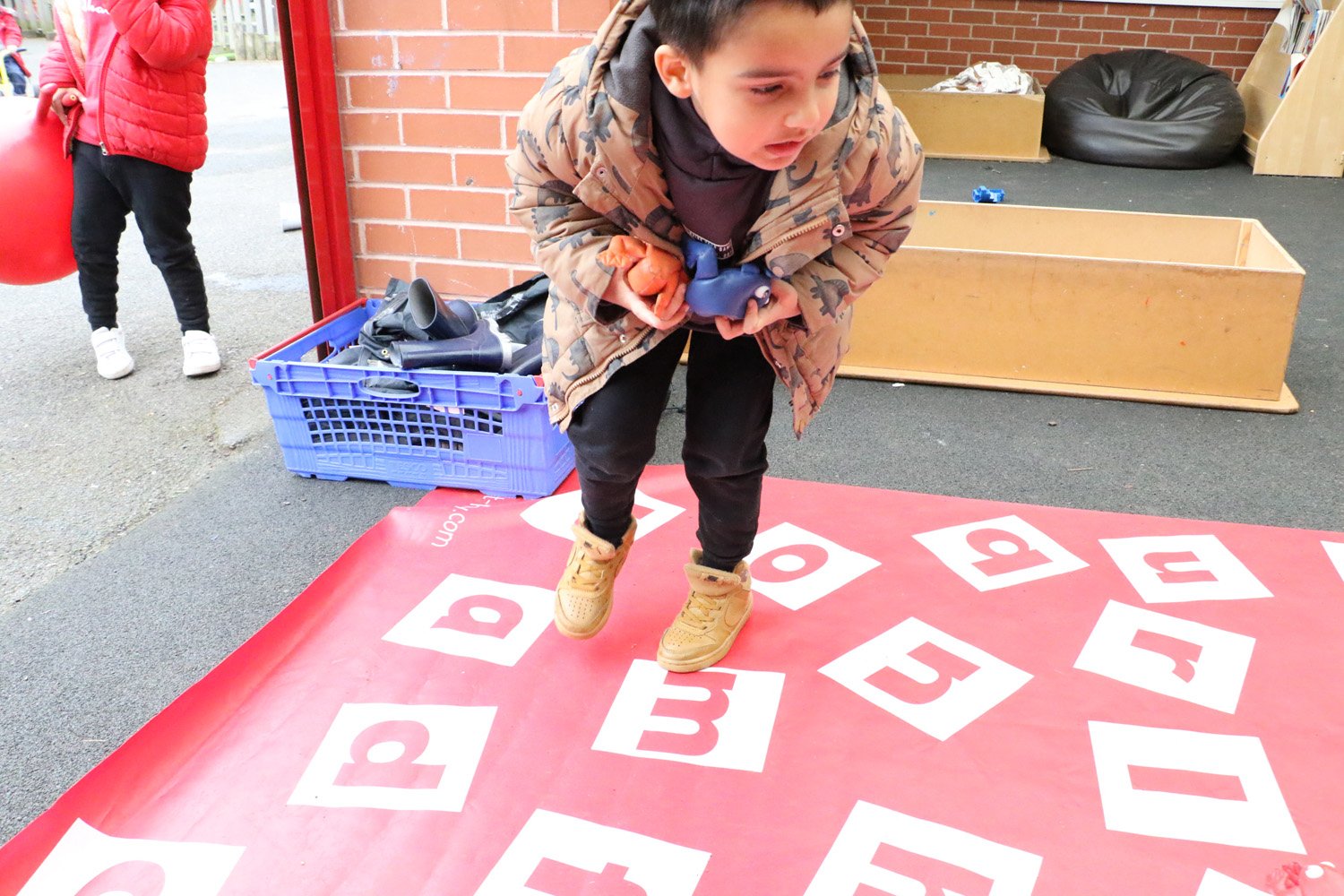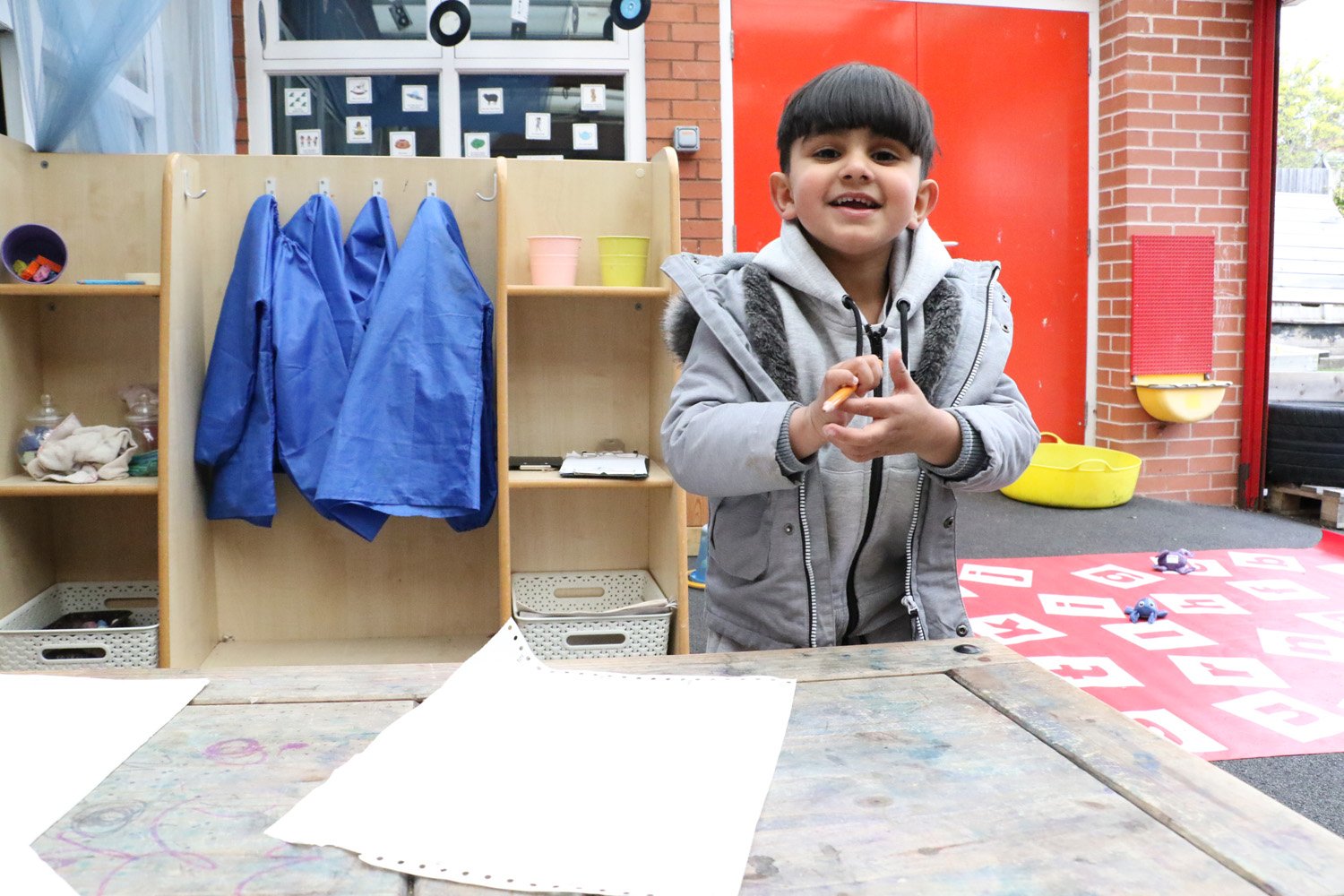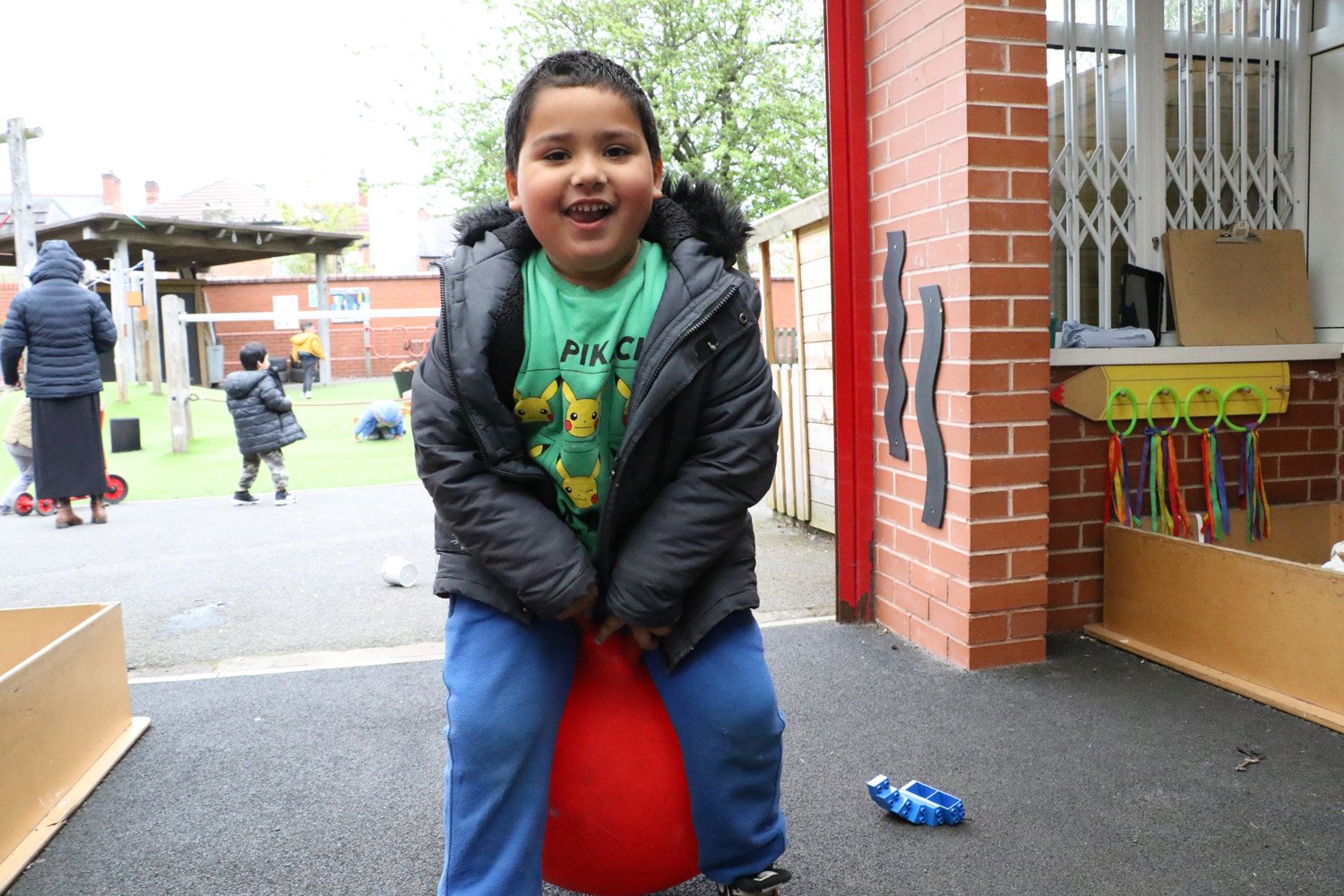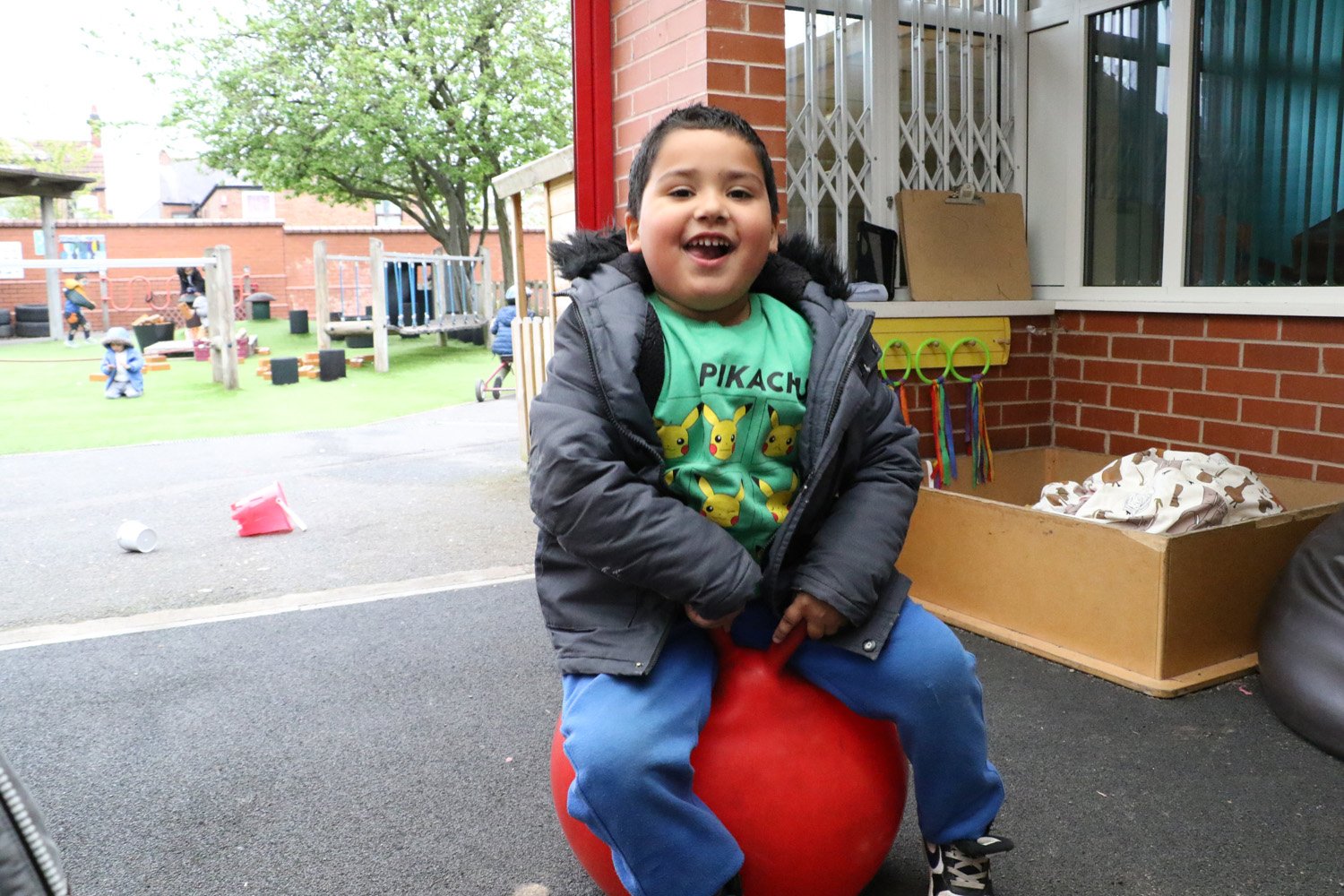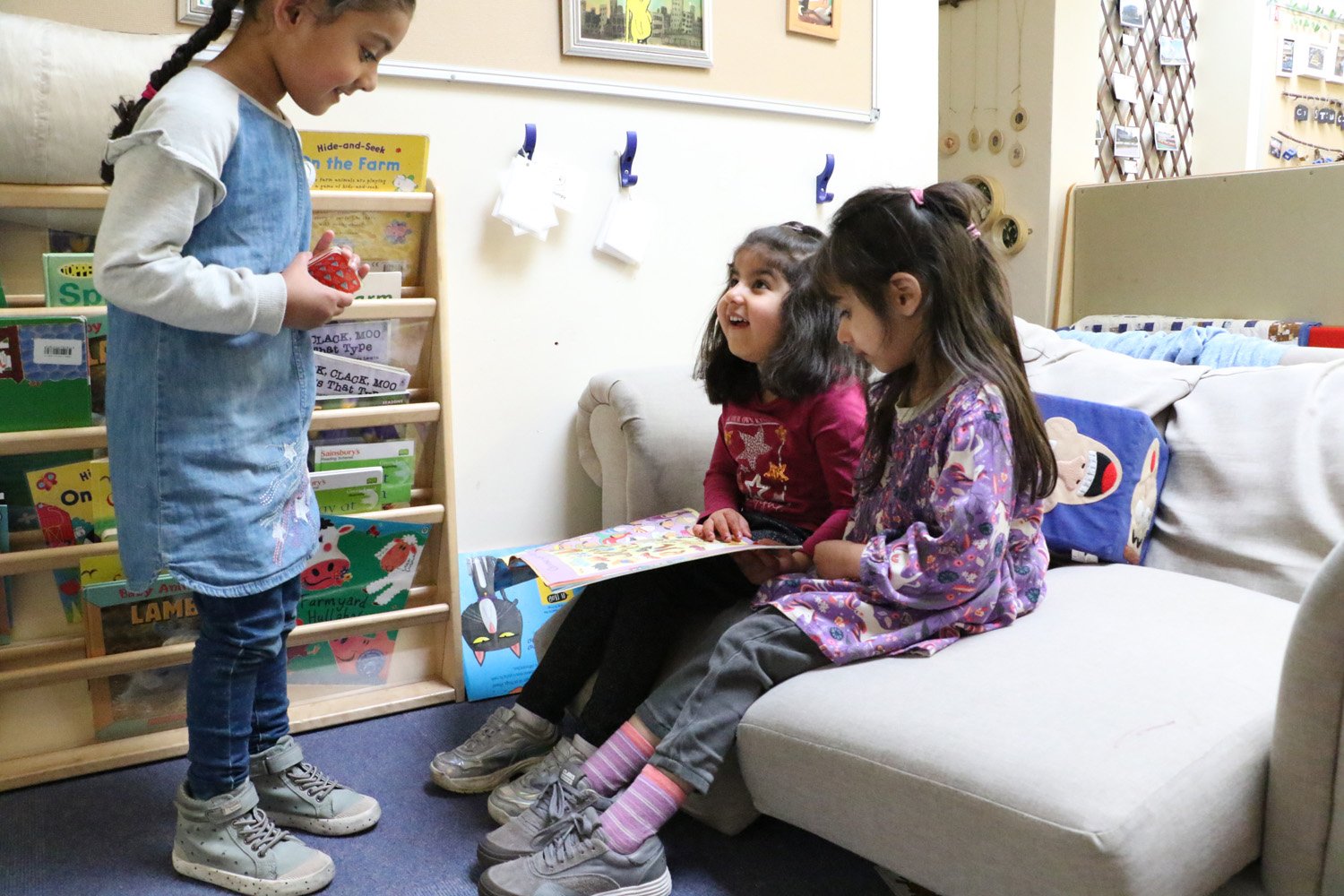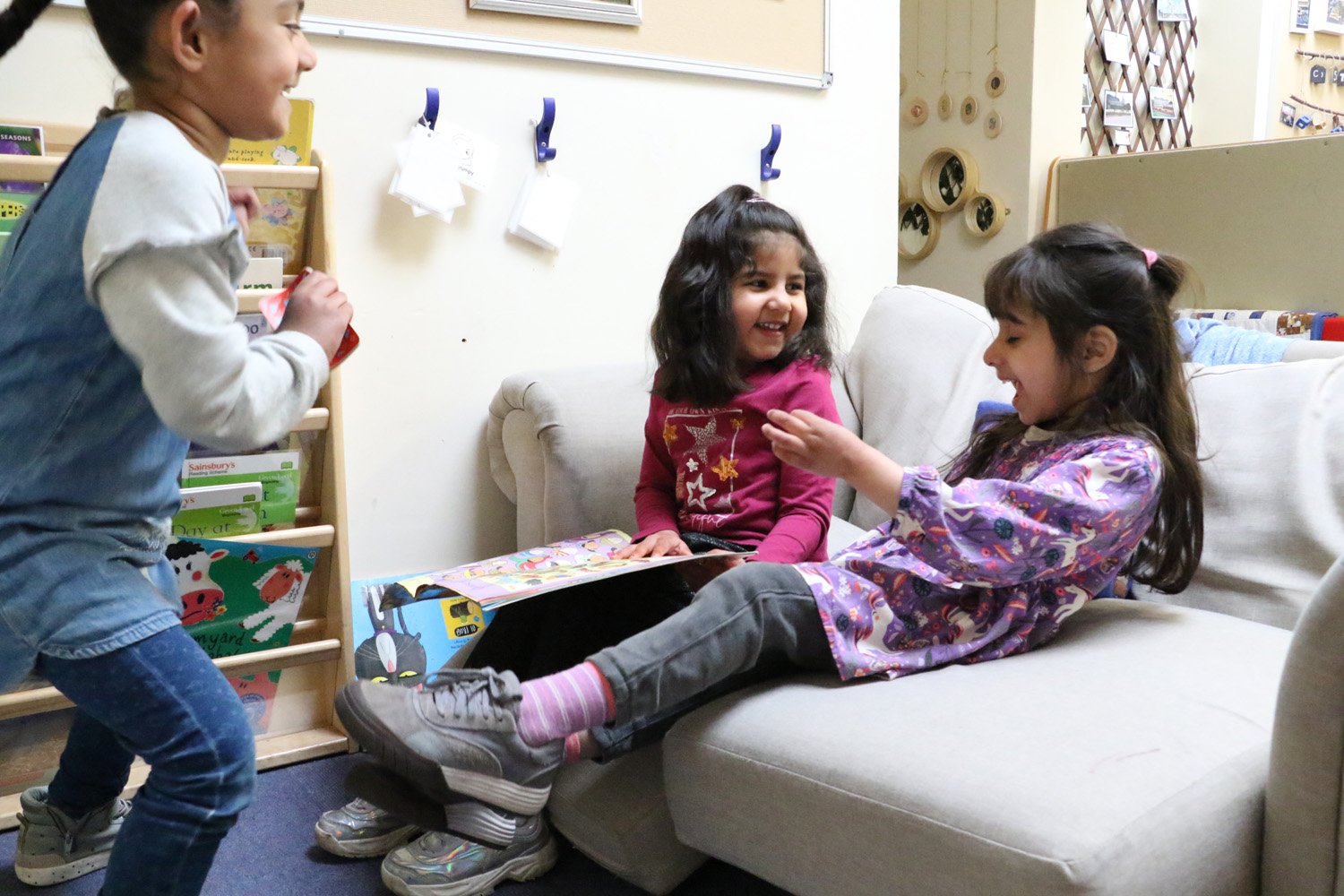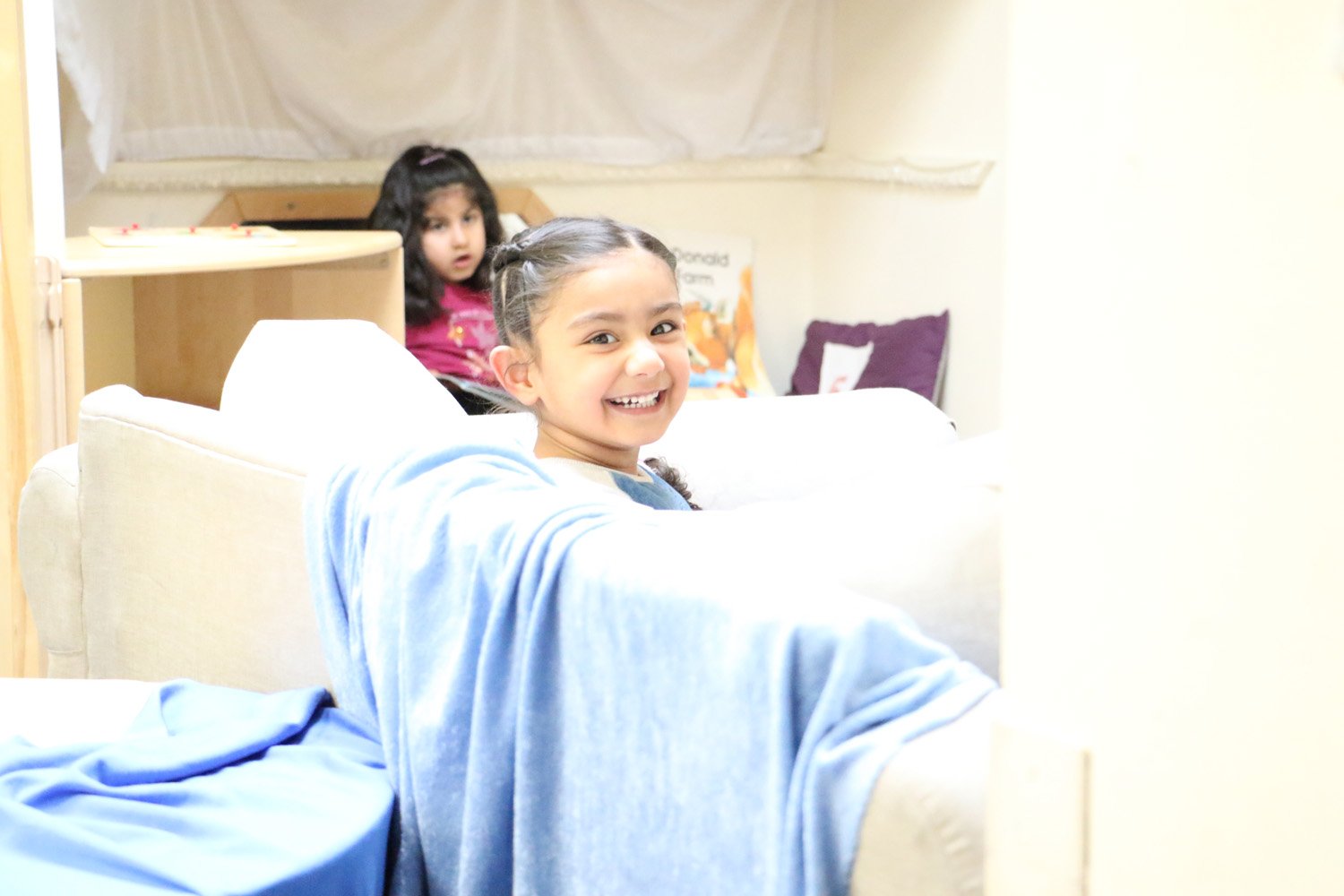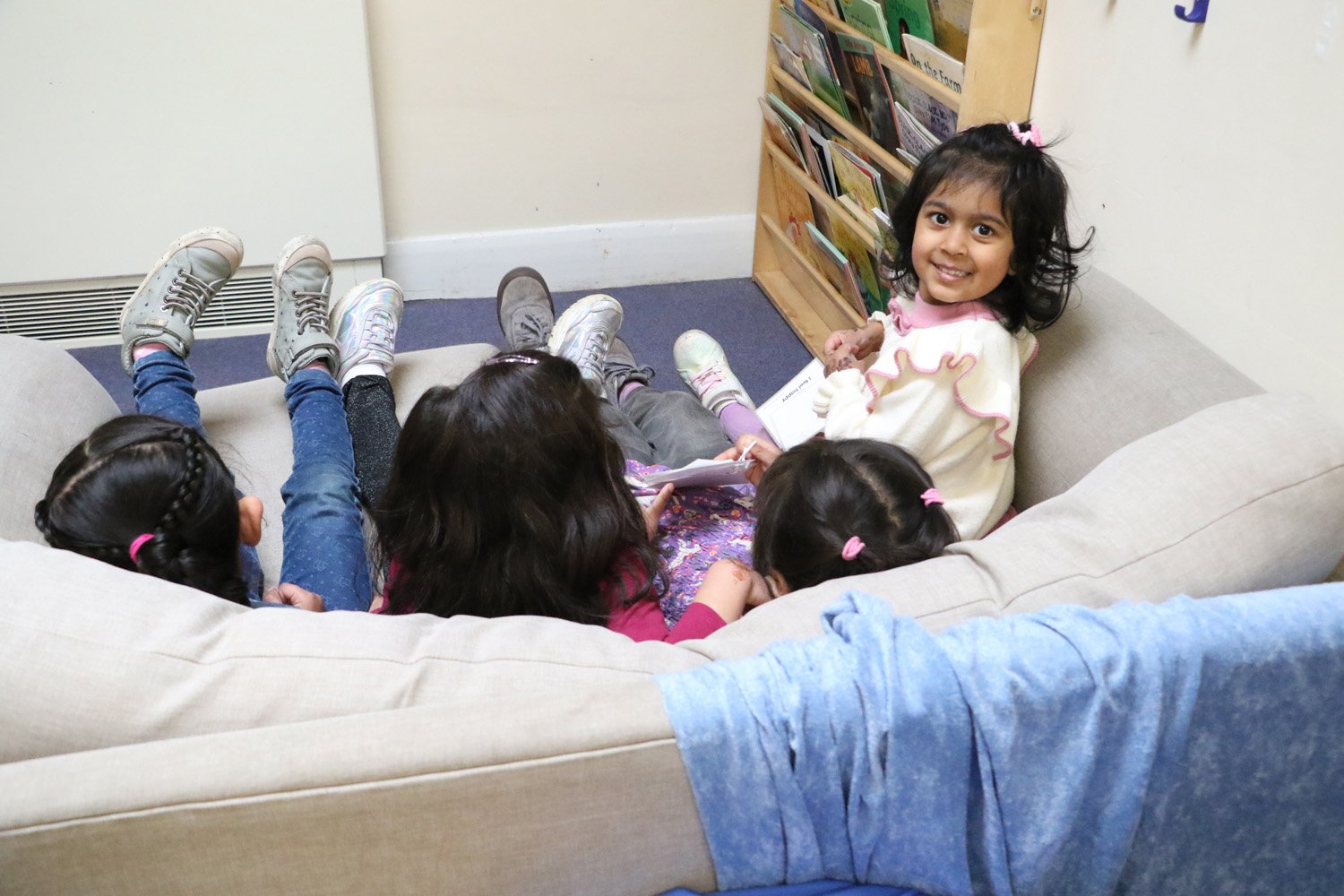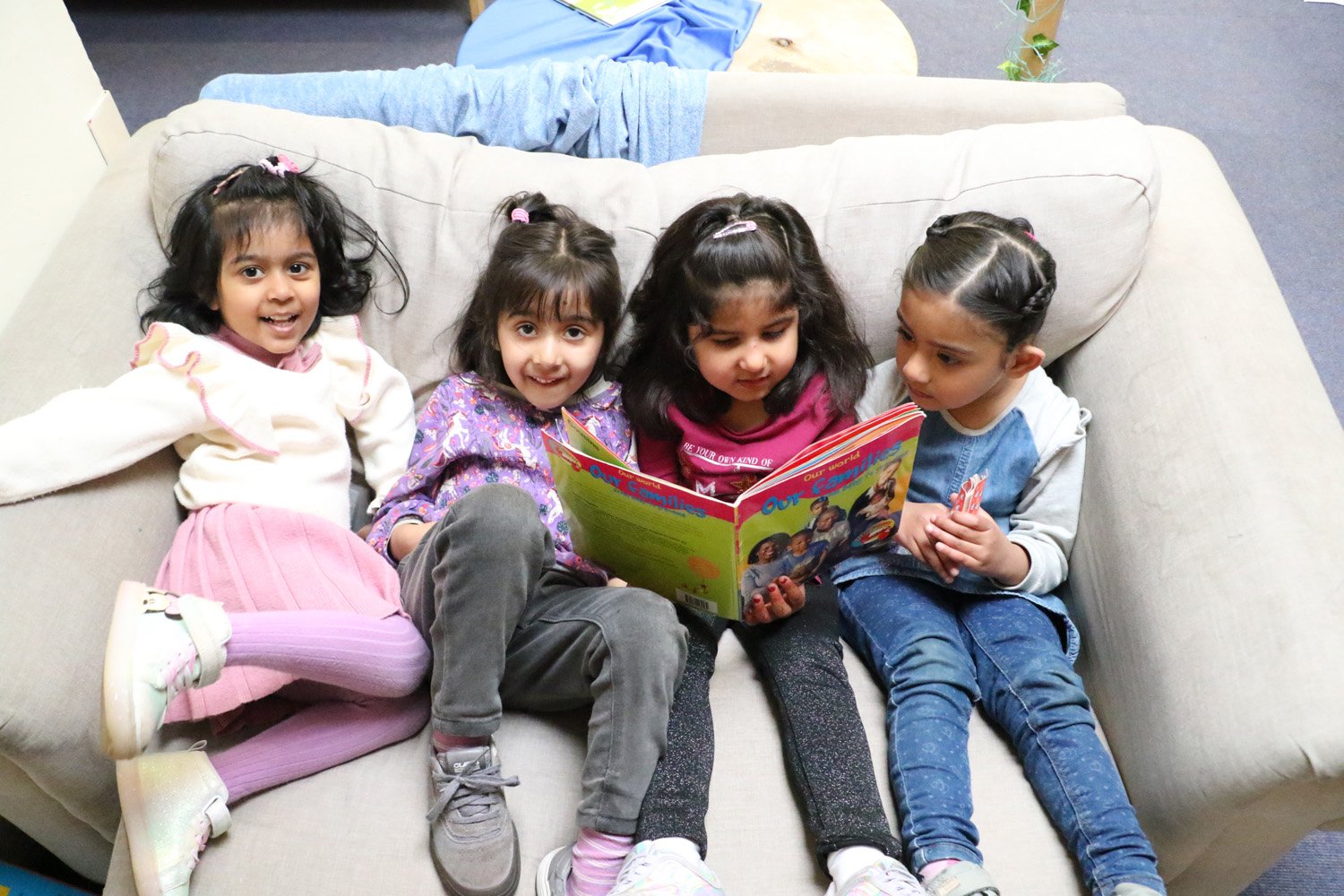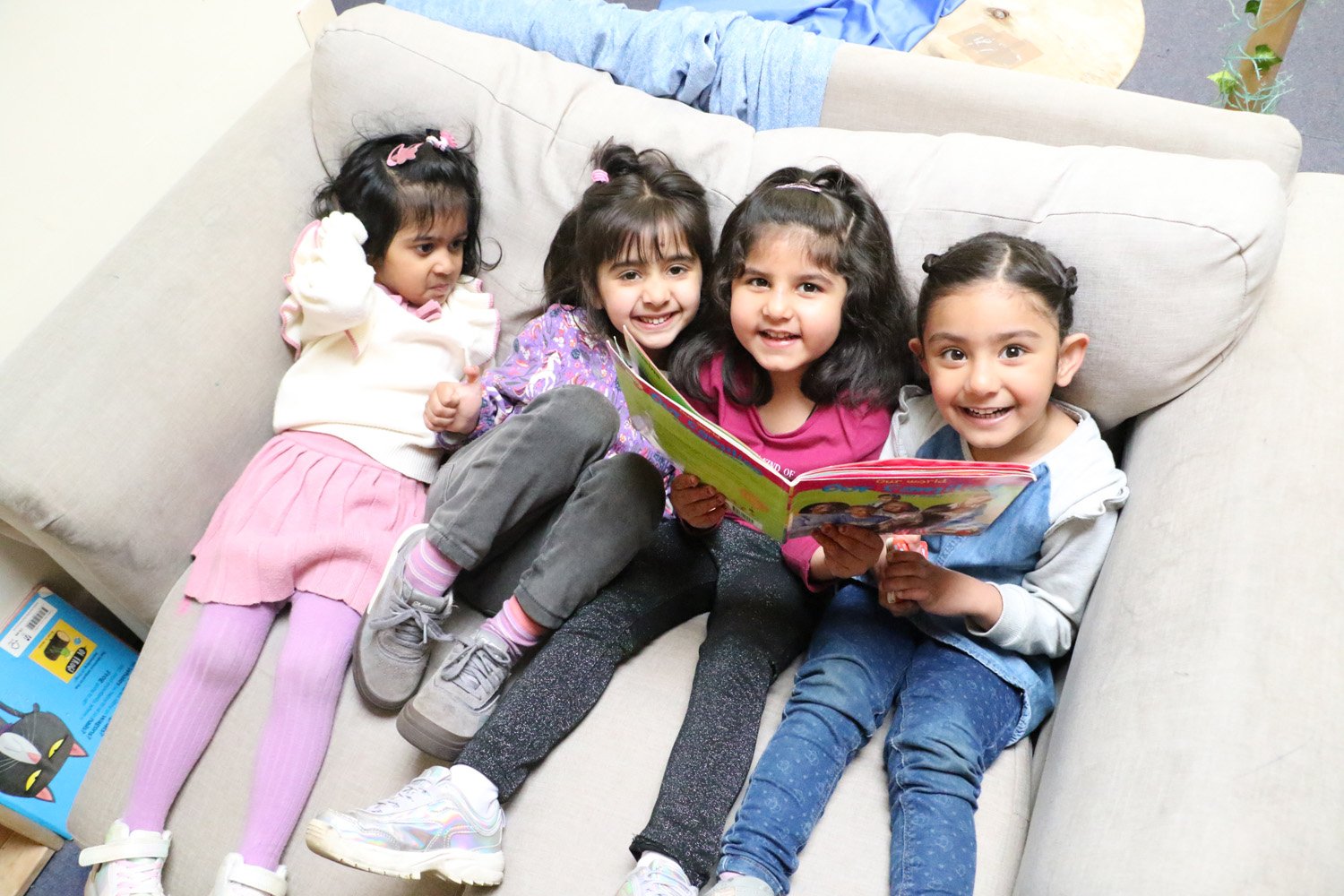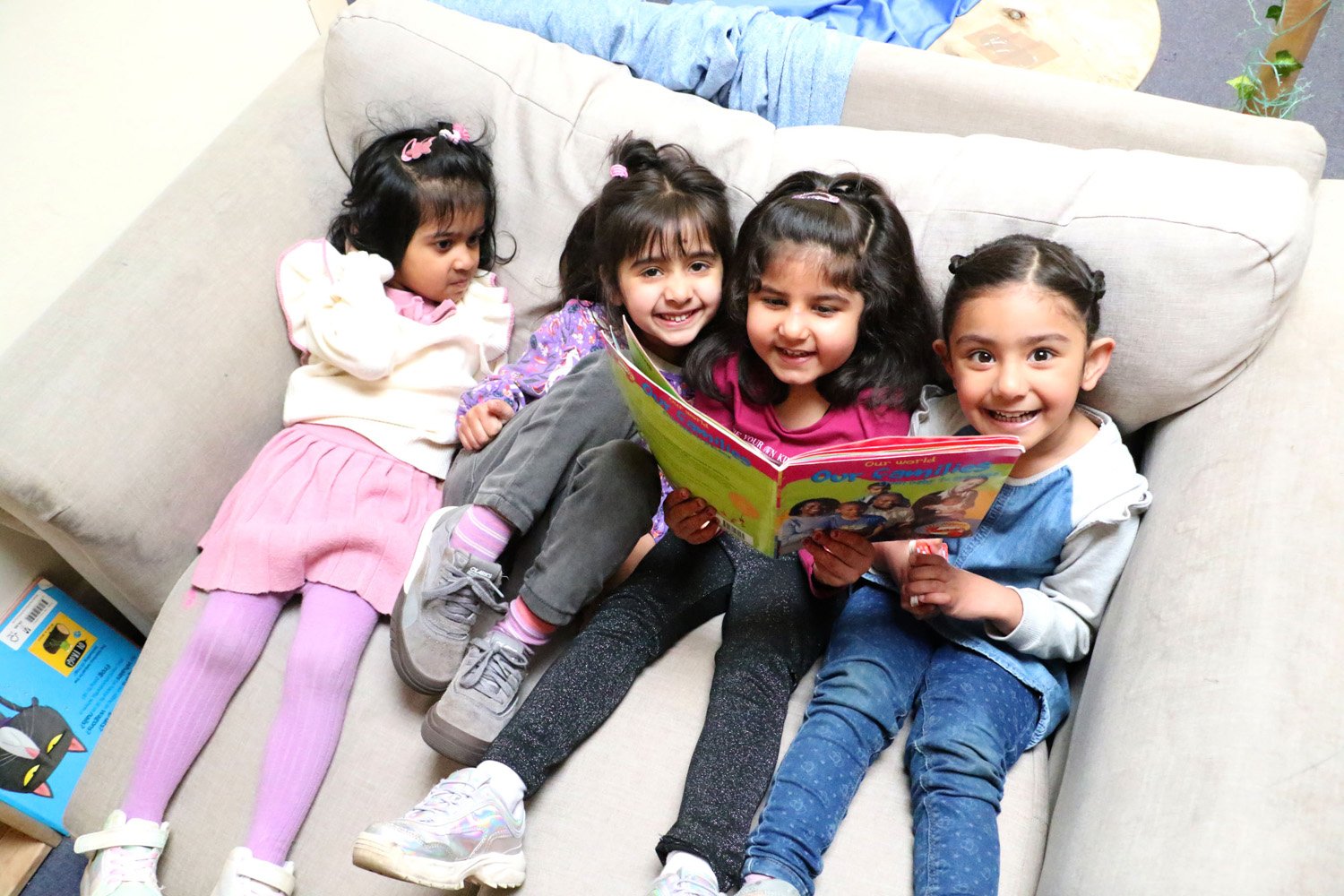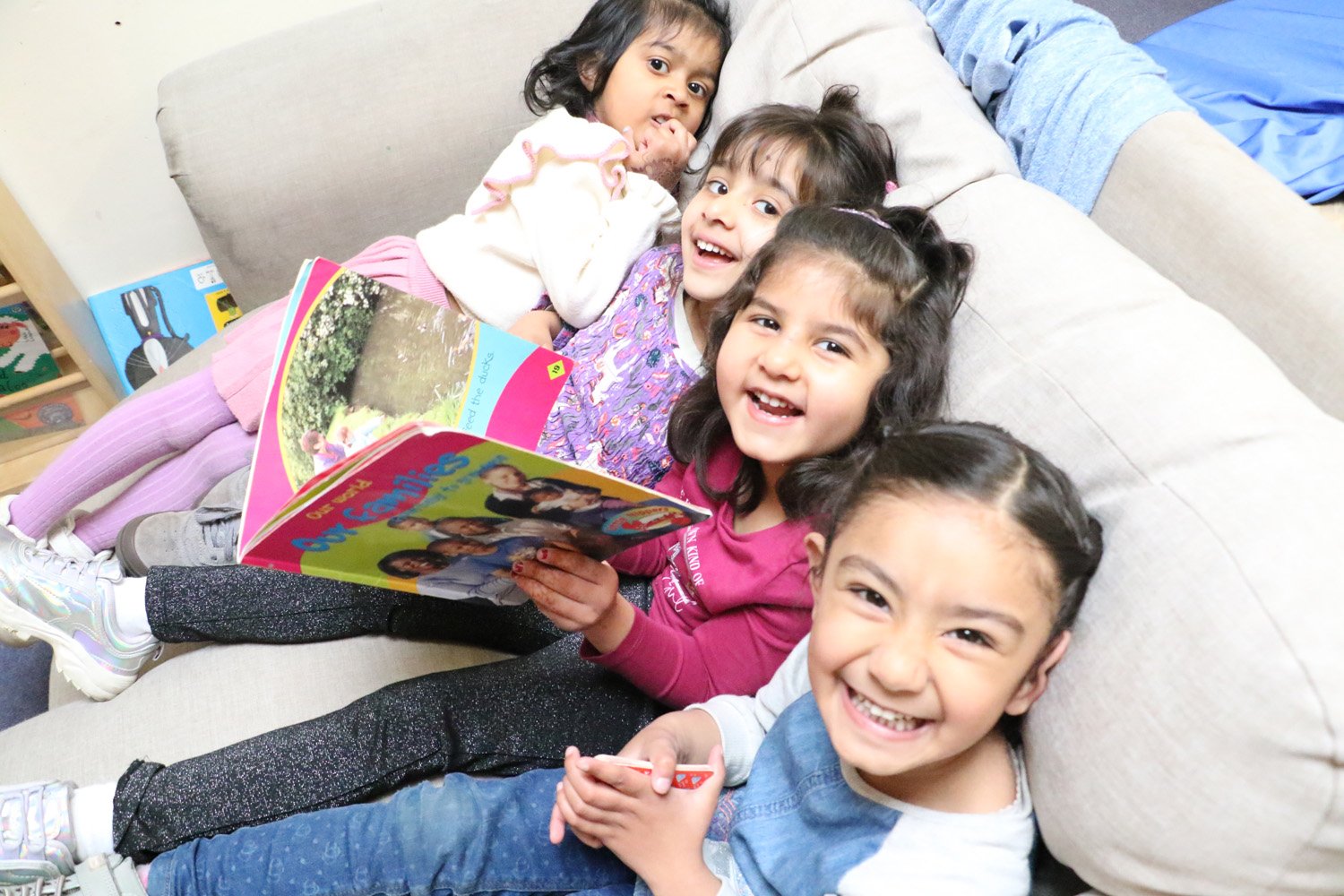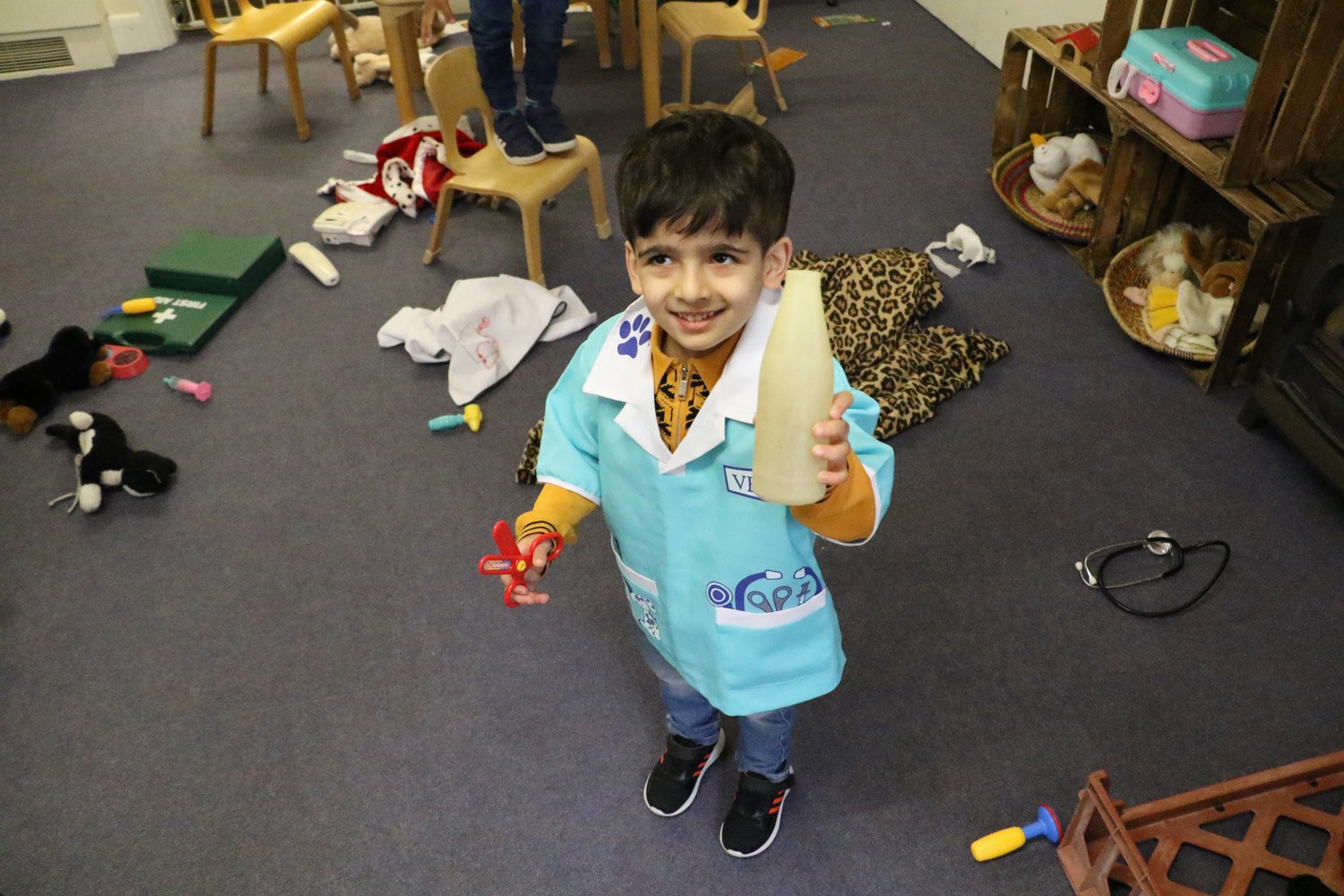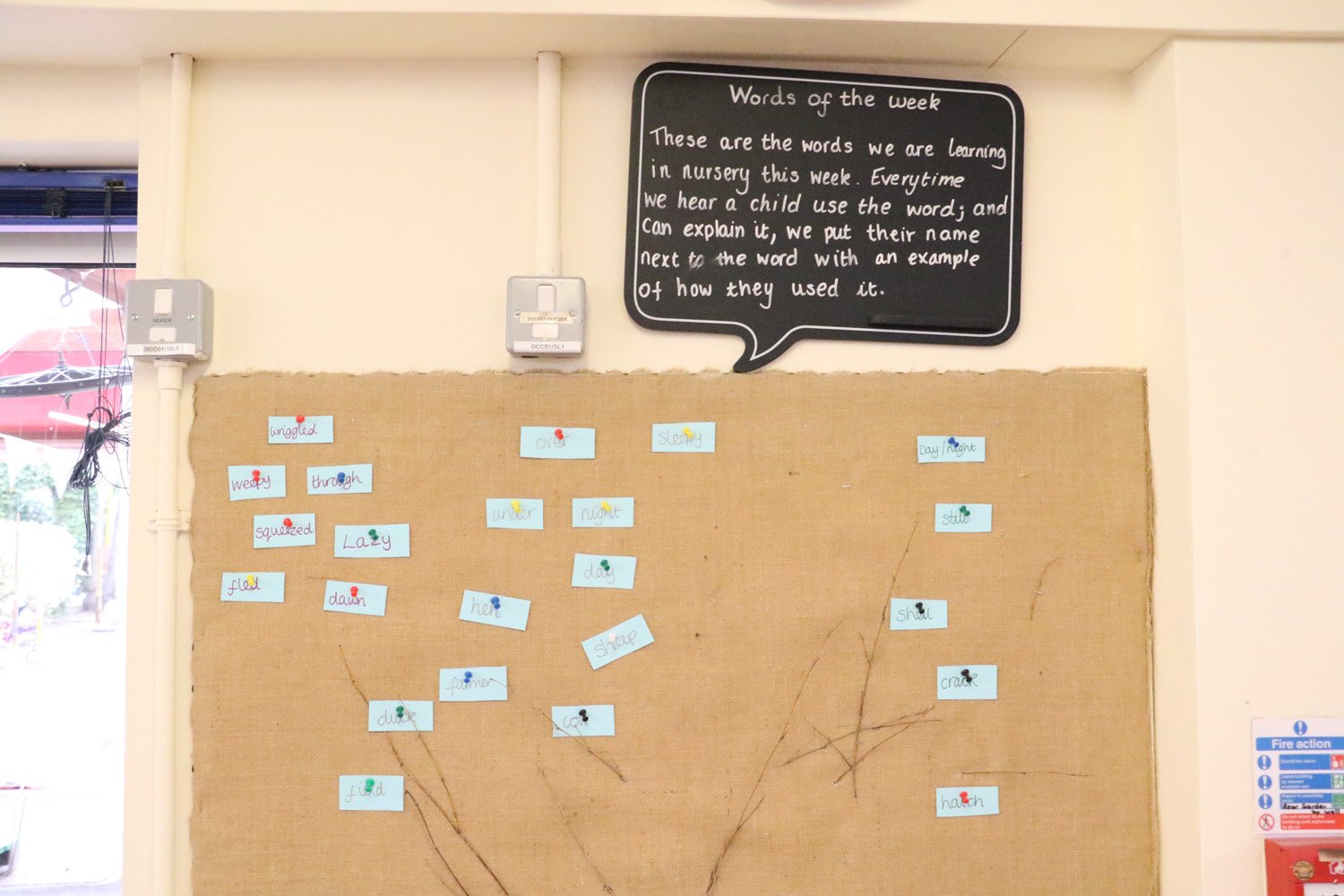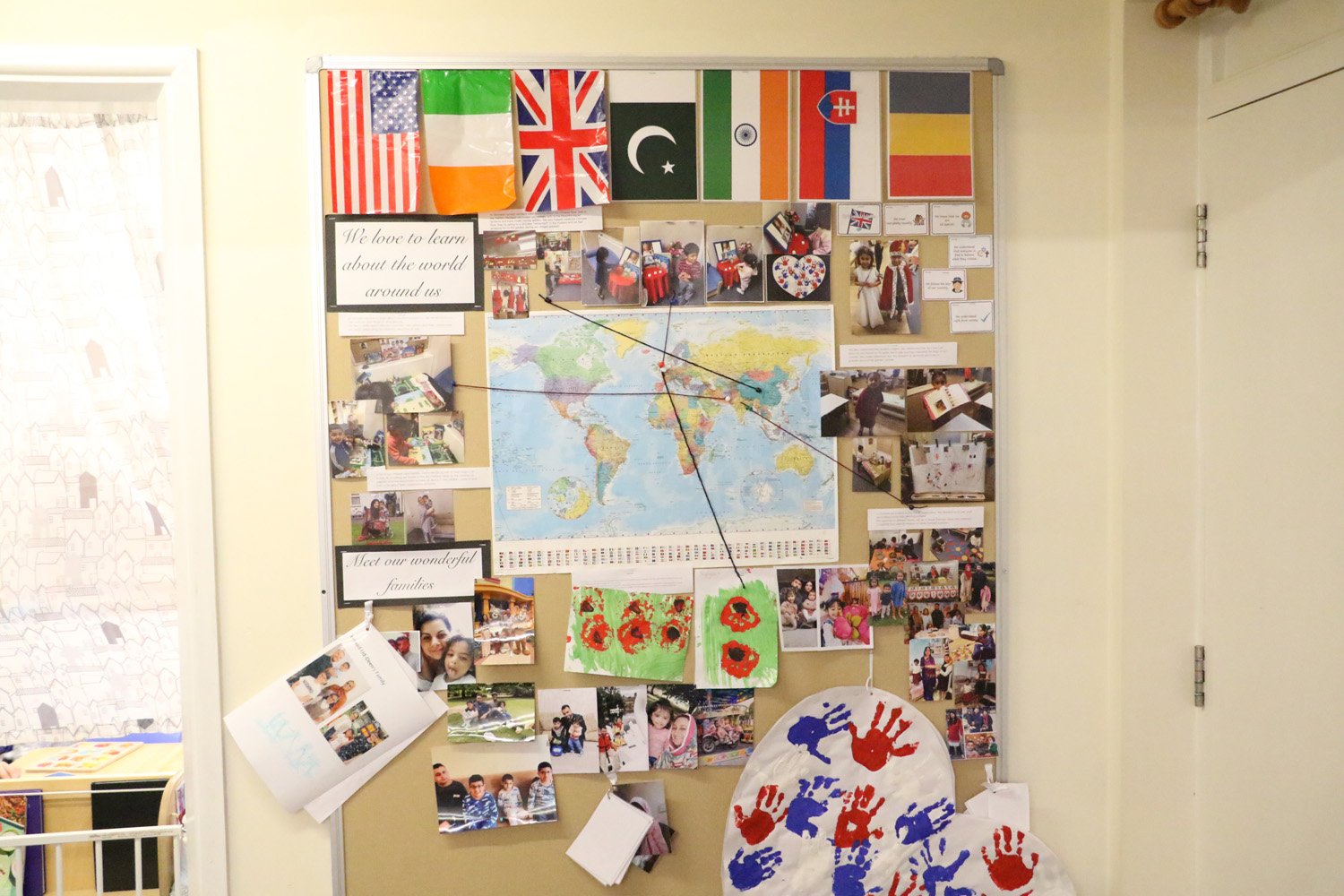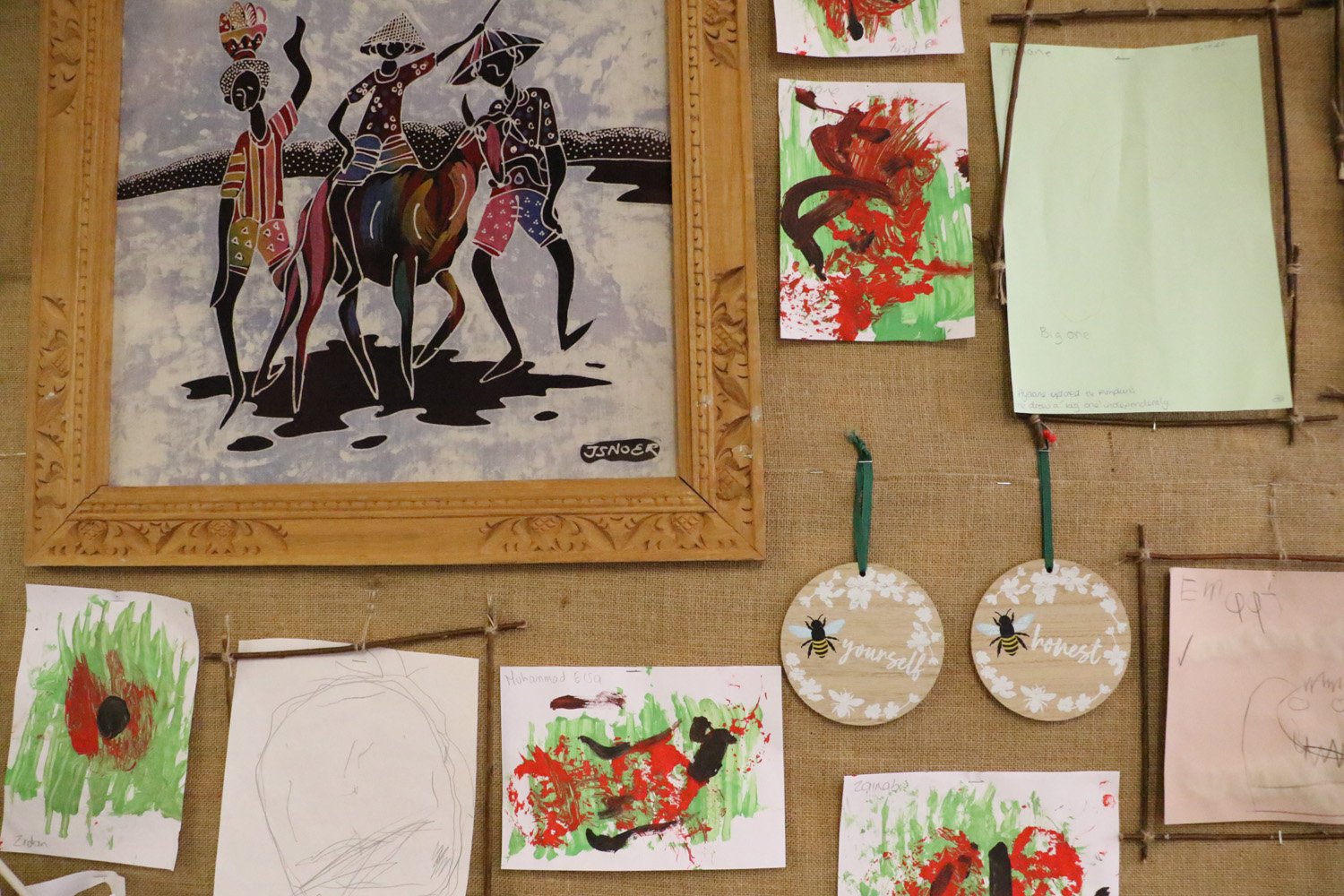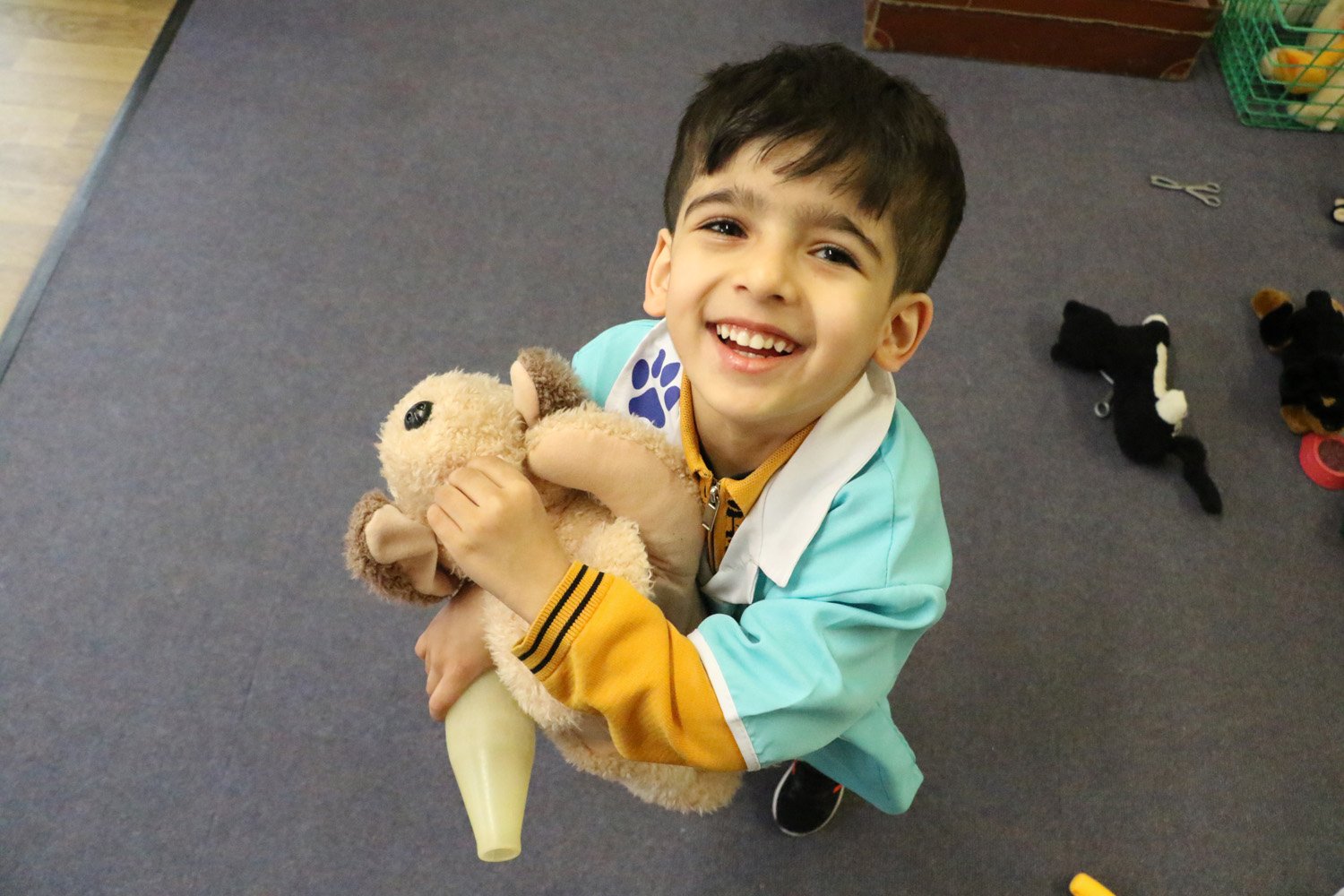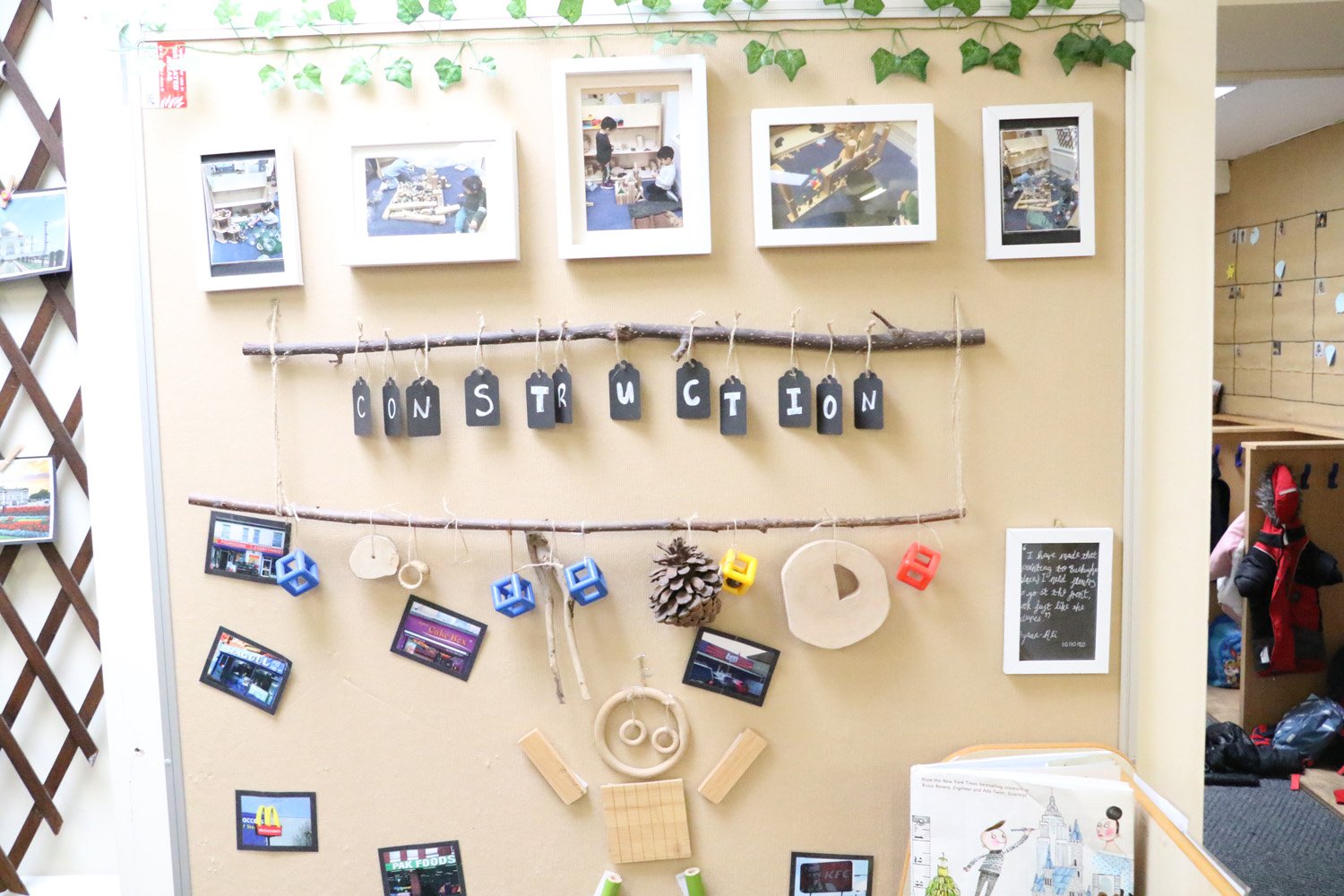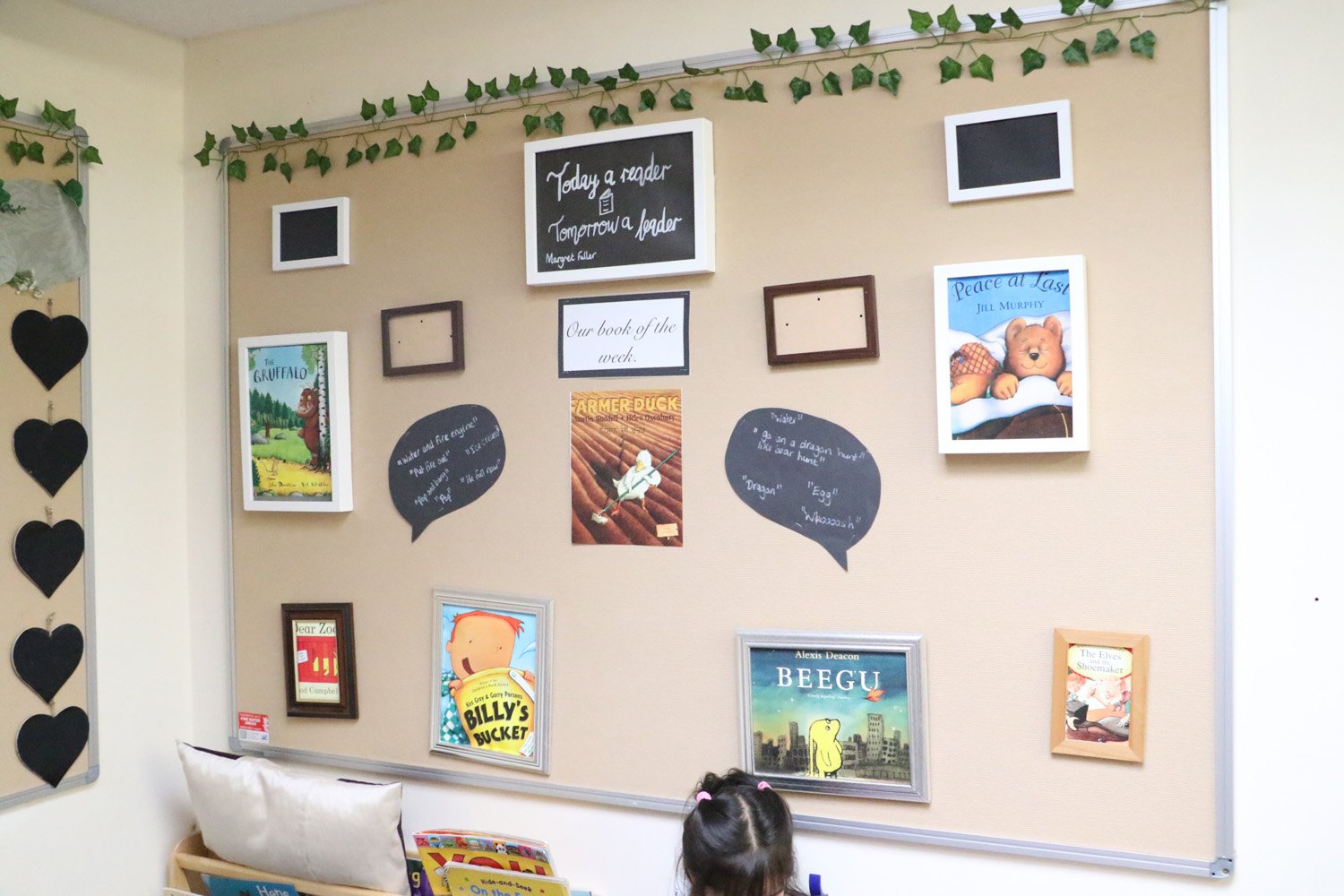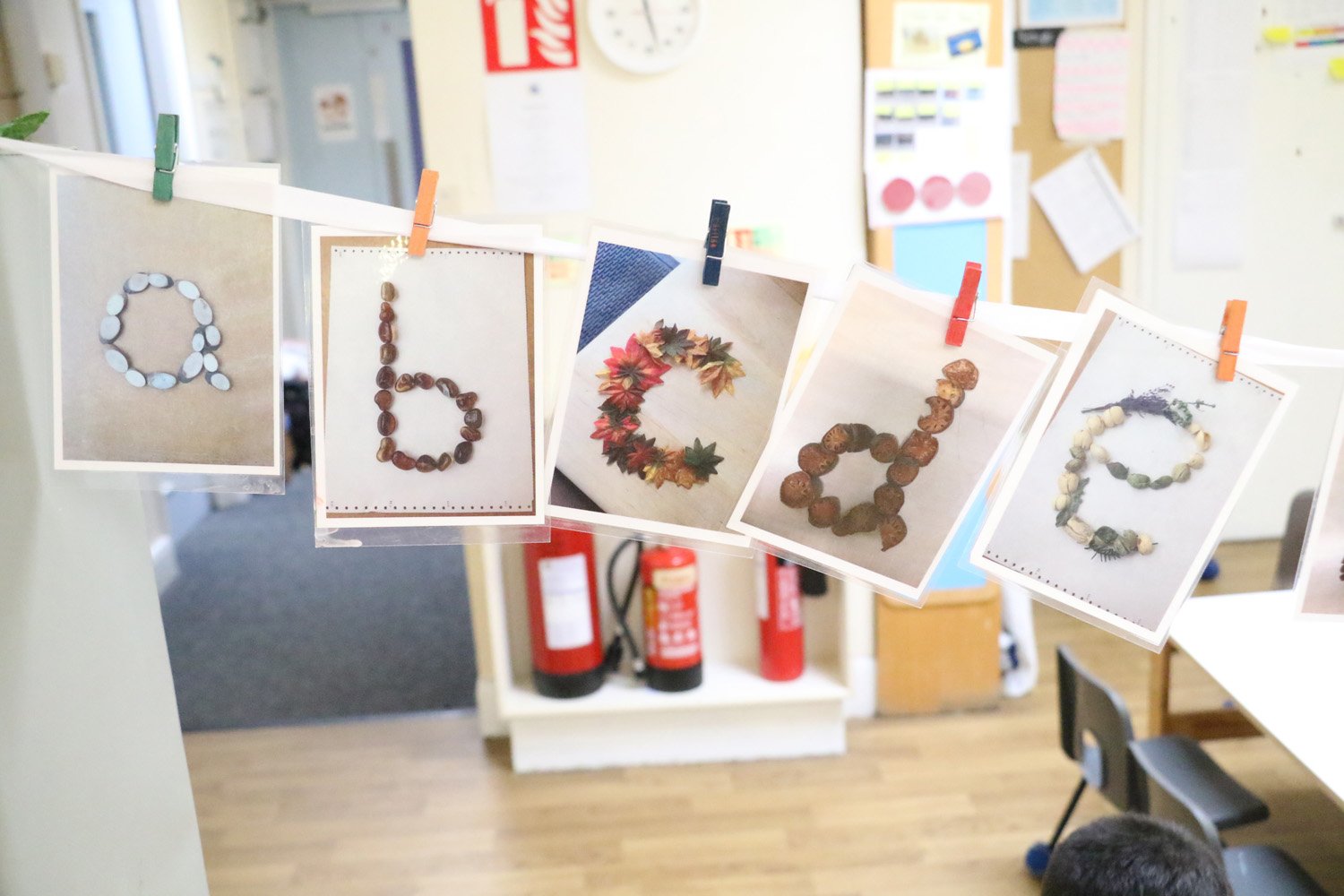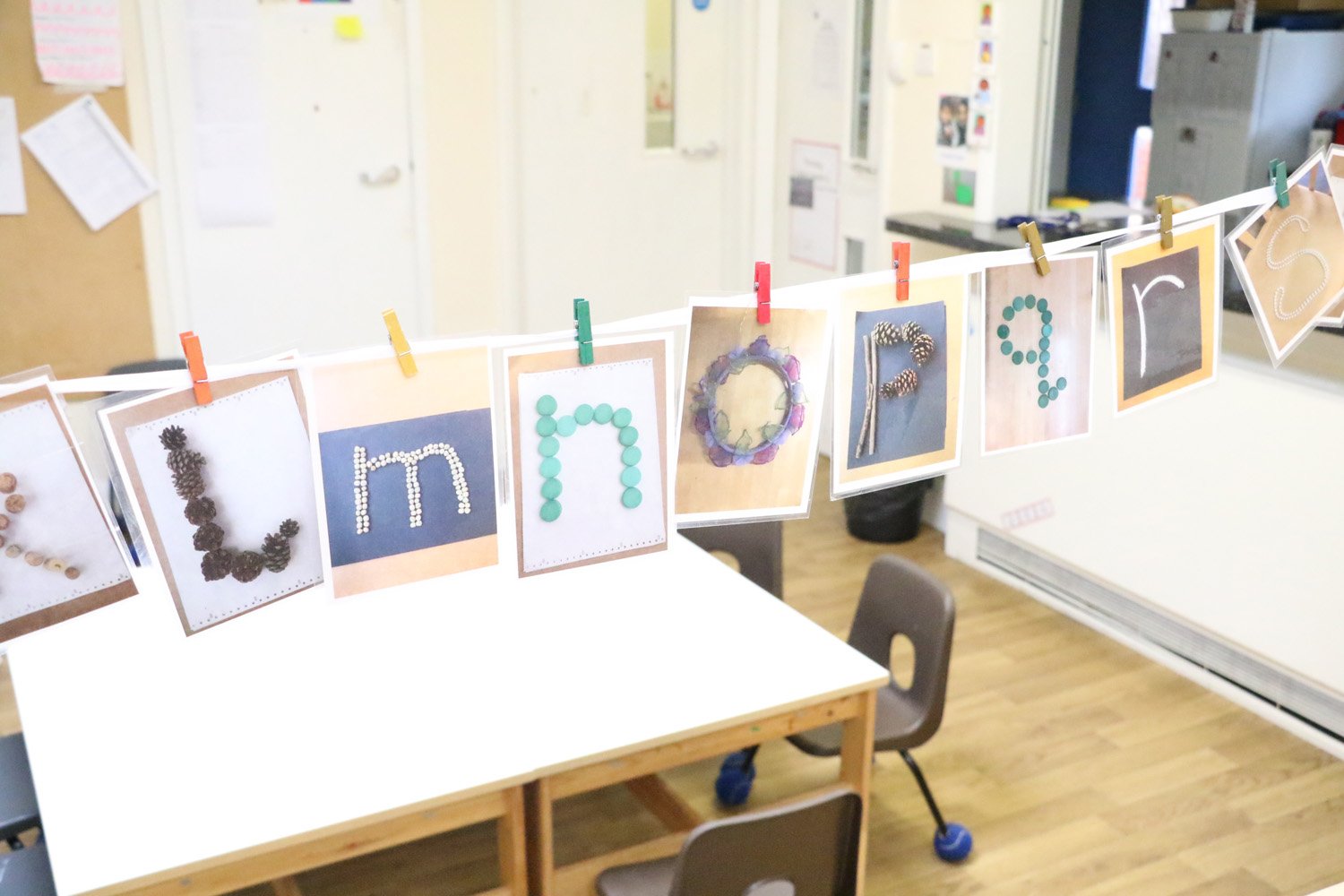Communication, Language & Literacy
Our curriculum is underpinned by a core book approach, where high quality texts have been selected to develop children’s interests and knowledge of the world around them. This approach also aims to foster a love of reading and extend their vocabulary and their expressive language.
Our staff are trained in a number of approaches to develop children’s language, including ELKAN and HANEN. Staff use strategies to provide a setting that is language rich.
Daily opportunities are provided to develop children’s phonological awareness (phase 1) and for children who demonstrate secure phonological awareness, staff skillfully teach phonemic awareness and oral blending.
We recognise the importance of our partnership with parents. Parent workshops and open evenings offer the opportunity to share strategies and ideas with parents, which can then be used to promote language development at home.
Phonics at Stonehill
At Stonehill Nursery, our learning is under pinned by a core text*. Communication and Language is at the heart of everything we do here and in turn builds the foundations for early reading and writing skills also known as ‘phonics’.
Phonics starts with singing songs and nursery rhymes as well as working on key learning goals, such as listening and attention skills. We promote songs and books through our weekly book swaps and regular parent workshops, which help parents to understand our techniques and support learning at home.
We promote ideas and core text on our Parent Hub app, so that parents can see what learning is taking place in Nursery and continue to encourage their children when they are at home and out and about.
Our core text is a book(s), selected to support and enhance our children’s learning experience. The story will link to our learning throughout that week/month/half term, depending on the topic we are working on. We will revisit the story many times to develop our children's understanding.
Things to do at home
Sing songs, nursery rhymes and finger rhymes
Read a bed time story together or make up your own stories
Look through pictures books and talk about the story to develop language skills
Have a go at some rhyming activities
Leave words out of songs for the children to finish them
Listen to sounds in the environment like cars, bikes, bells, etc. and talk about them
Make musical instruments at home, using plastic bottles, rice etc.
Tap on boxes or pans to make your own drums
Move your bodies to music and to rhythms … dance around the kitchen together!
Make up your own songs or change words to songs they already know
Play picture and sounds lotto
Match animals to the sounds they make
Use our story sacks to aid in the processing and memory of a story
Clap rhythms and sounds we can hear, use peoples names to rhyme with
Blending and Segmenting
When the children are ready we will start to use terminology such as segmenting and blending. This is when we build on the listening skills developed so far. We will segment the sounds, which means we split the sounds we can hear within a word and then blend the sounds, which means we push the sounds back together again.
c/a/t makes cat
d/o/g makes dog
Benefits of reading to children
Supports cognitive development
Improves language skills
Prepares children for academic success
Develops a special bond between parent and child
Increases concentration and discipline
Improves imagination and creativity
Cultivates a lifelong love of reading
Children aged 3-5, who are read to a bedtime sleep longer. Sleep plays a crucial role in the development of children, impacting on their growth, motor skills, attention, behavioural regulation, memory, mood and resilience.
Children's brains experience the most growth in their first five years. Stimulation from reading books, playing, talking, and singing with a parent or carer serves an important neurological function, enhancing cognitive, physical, social, and emotional growth.
